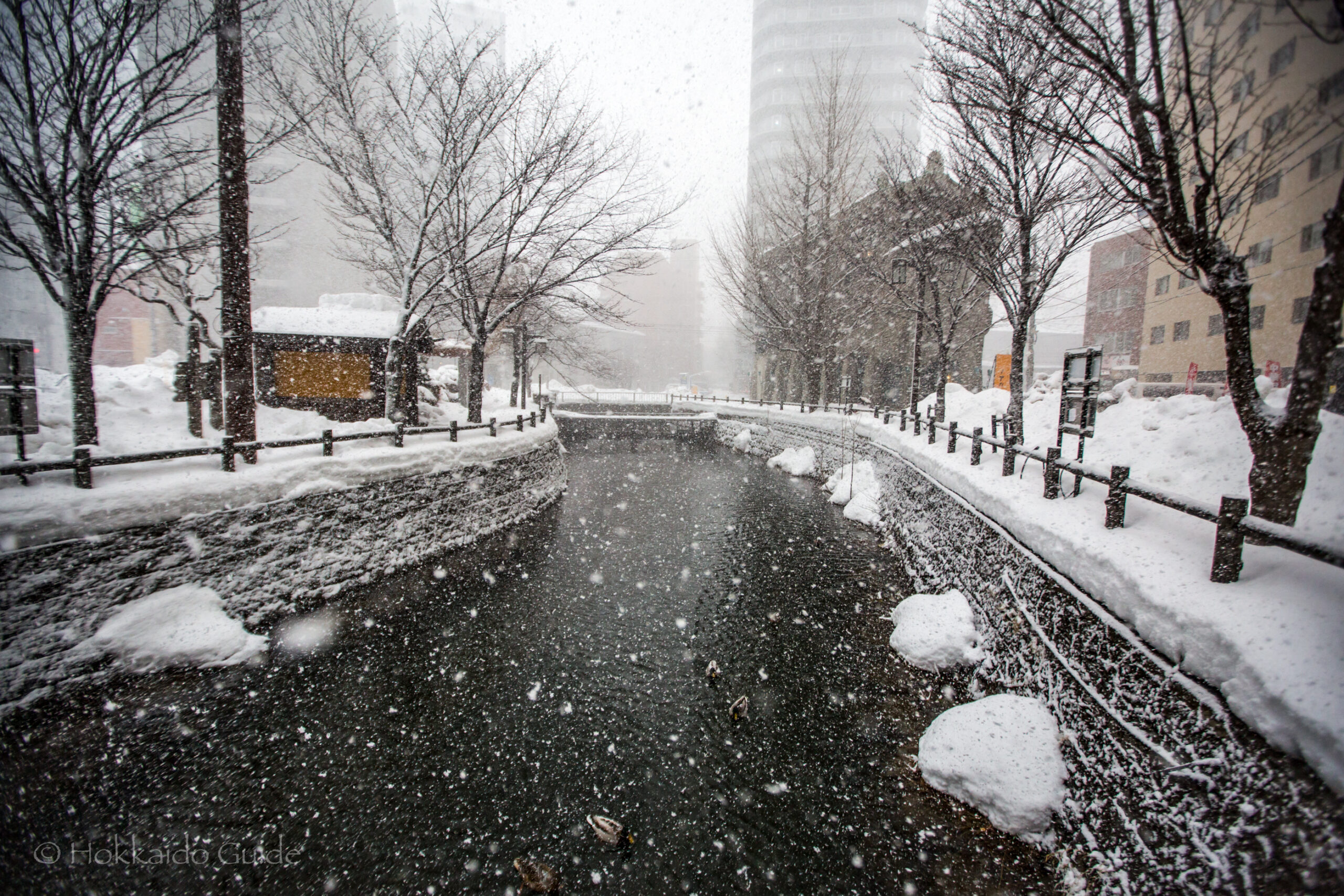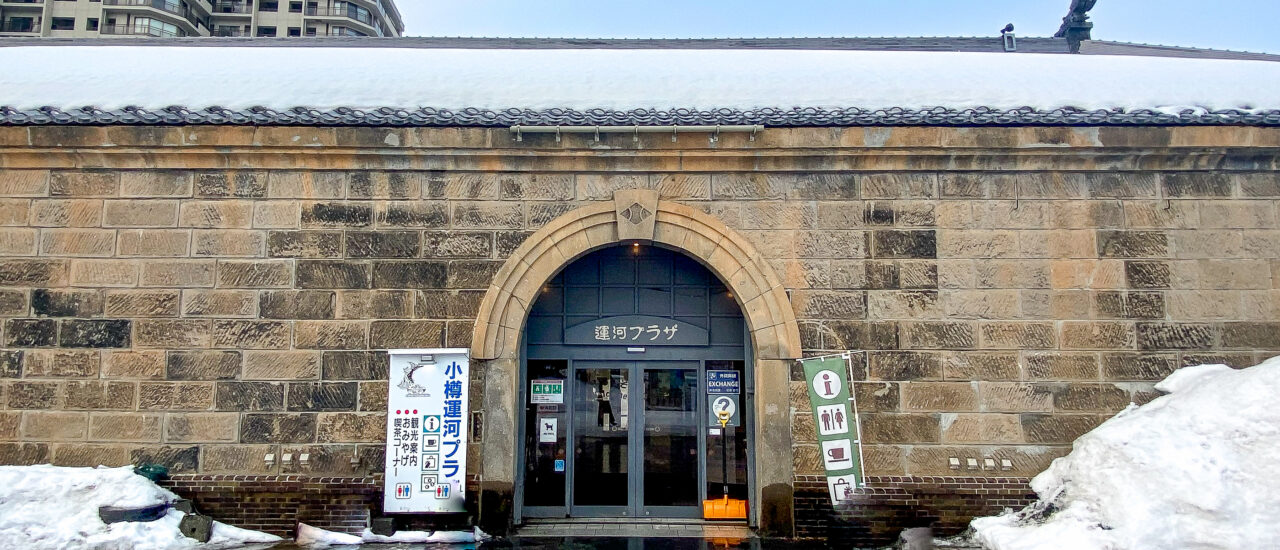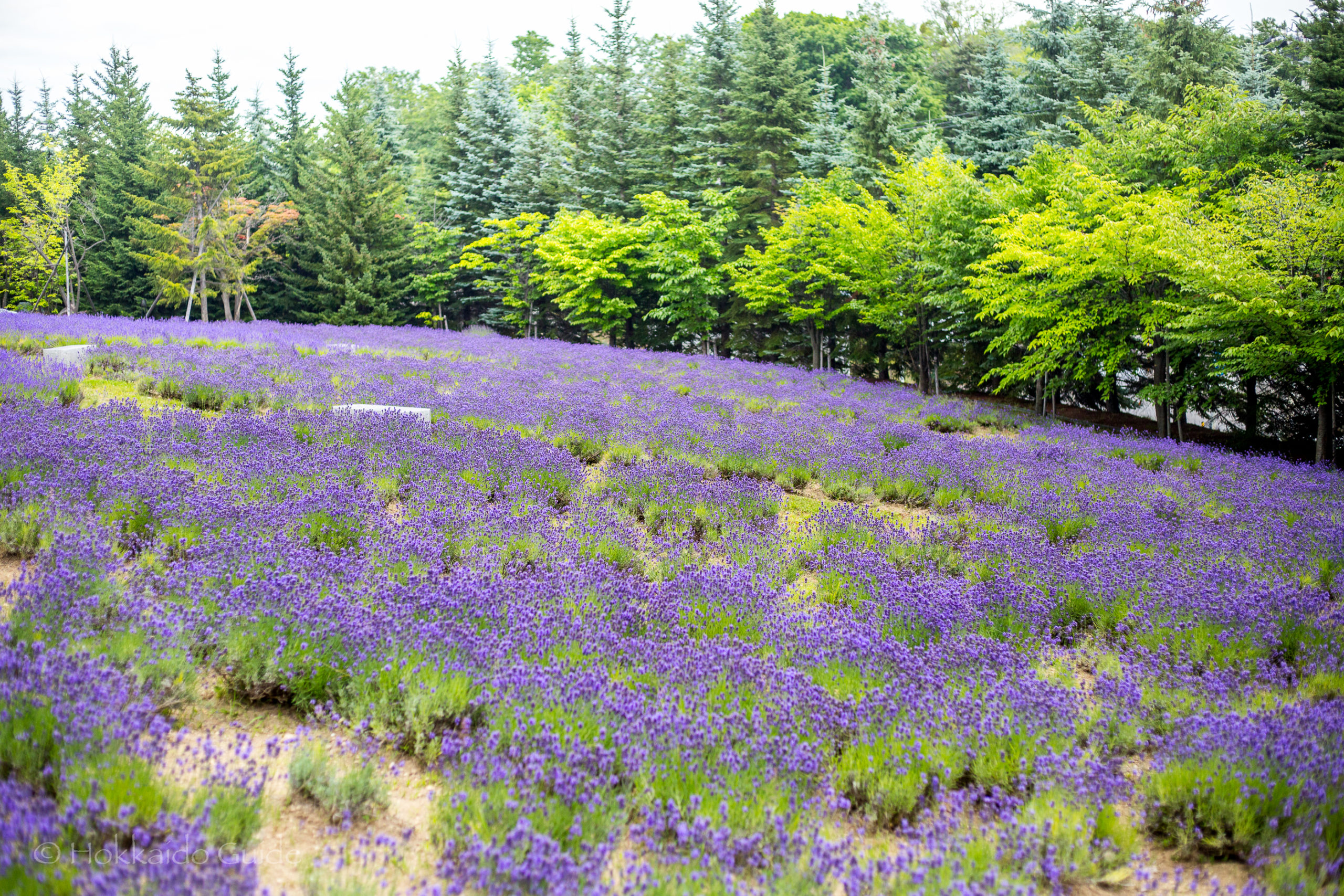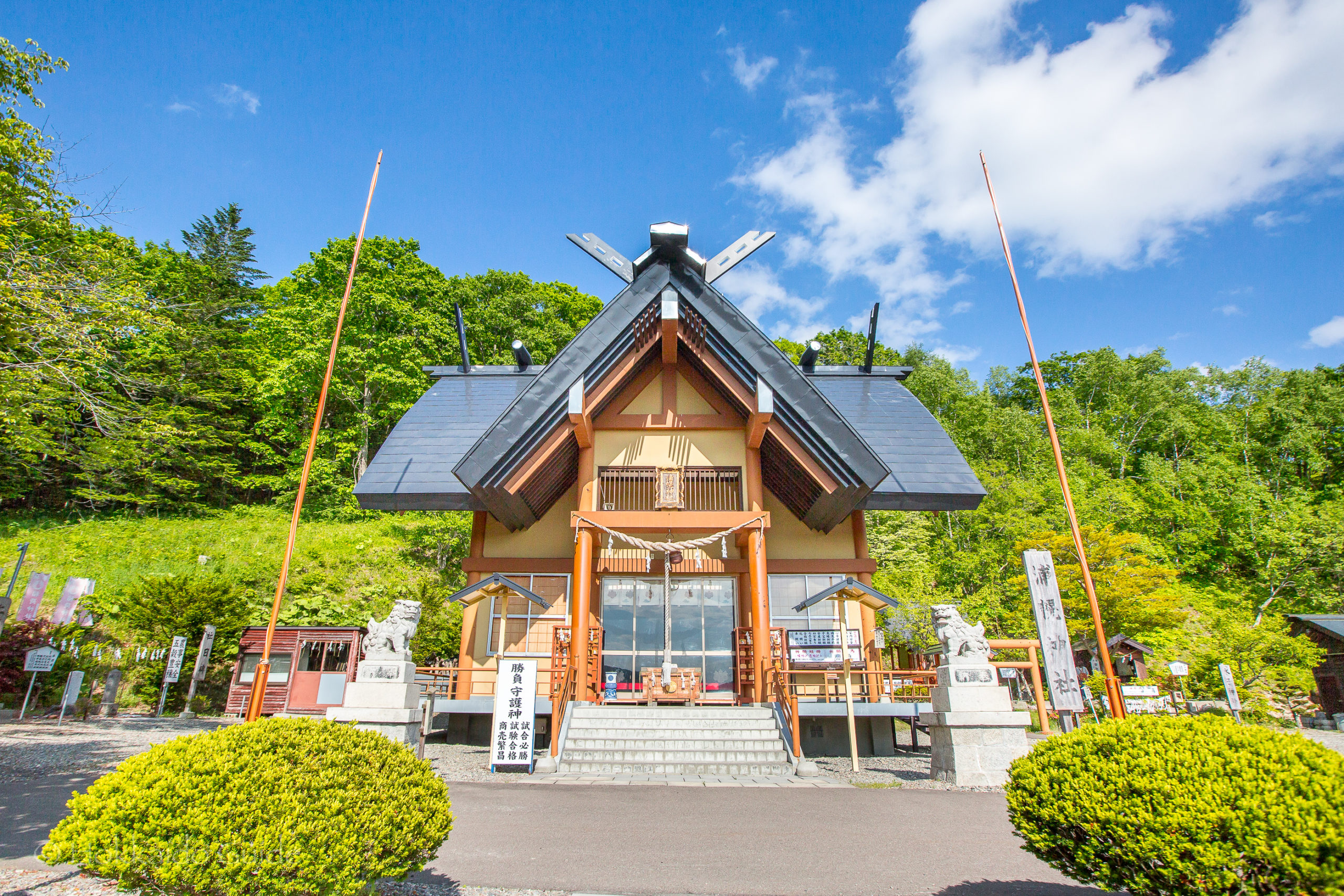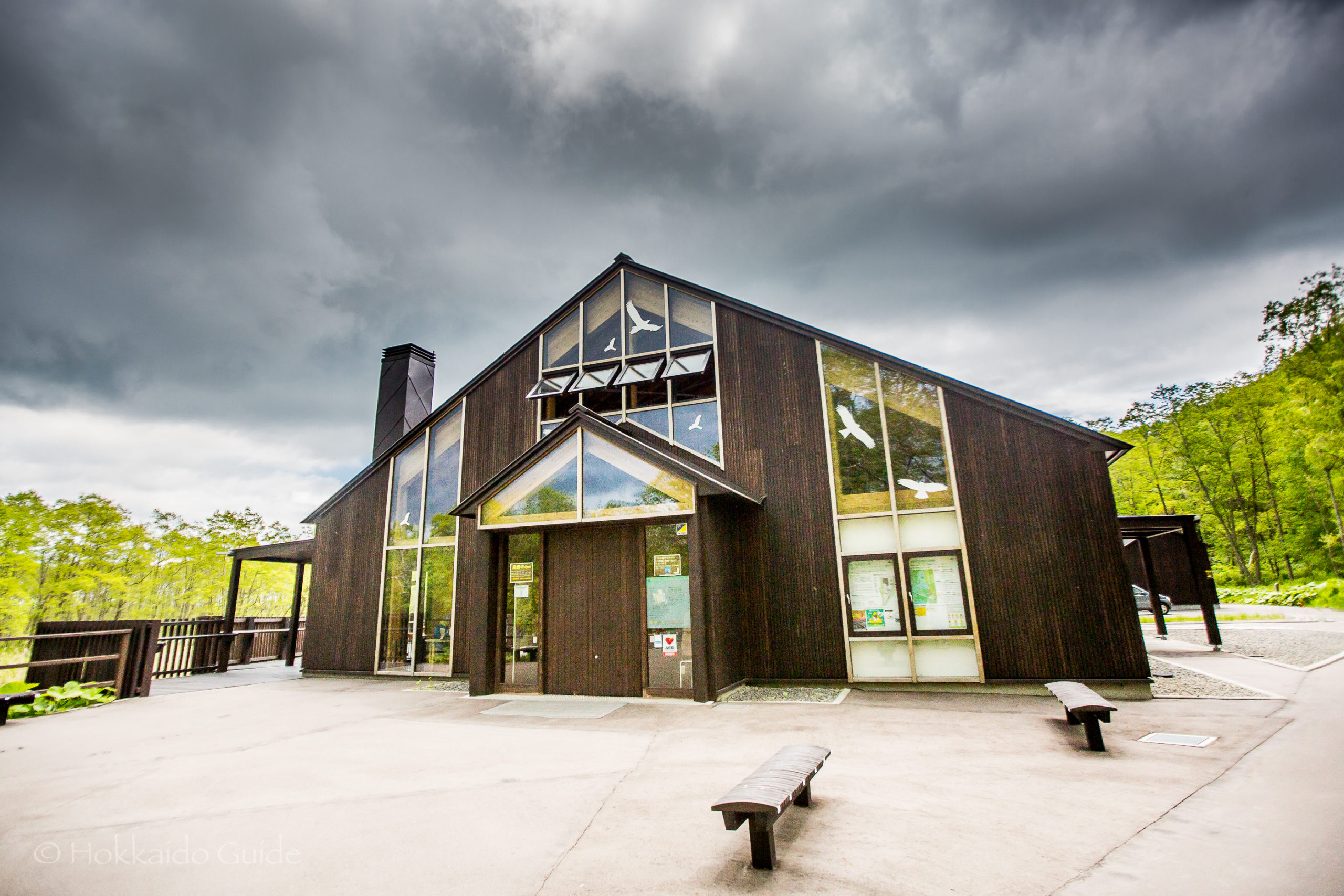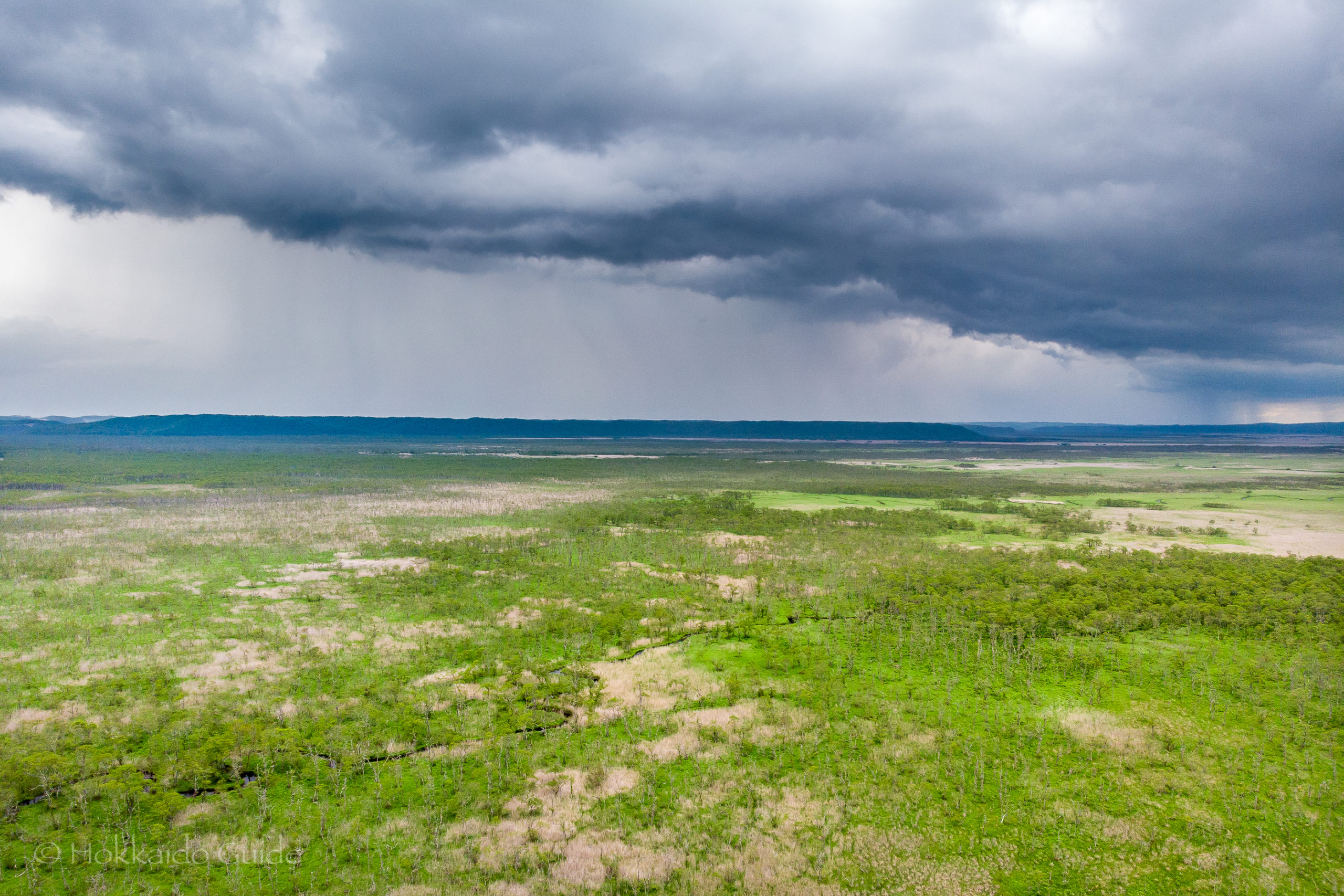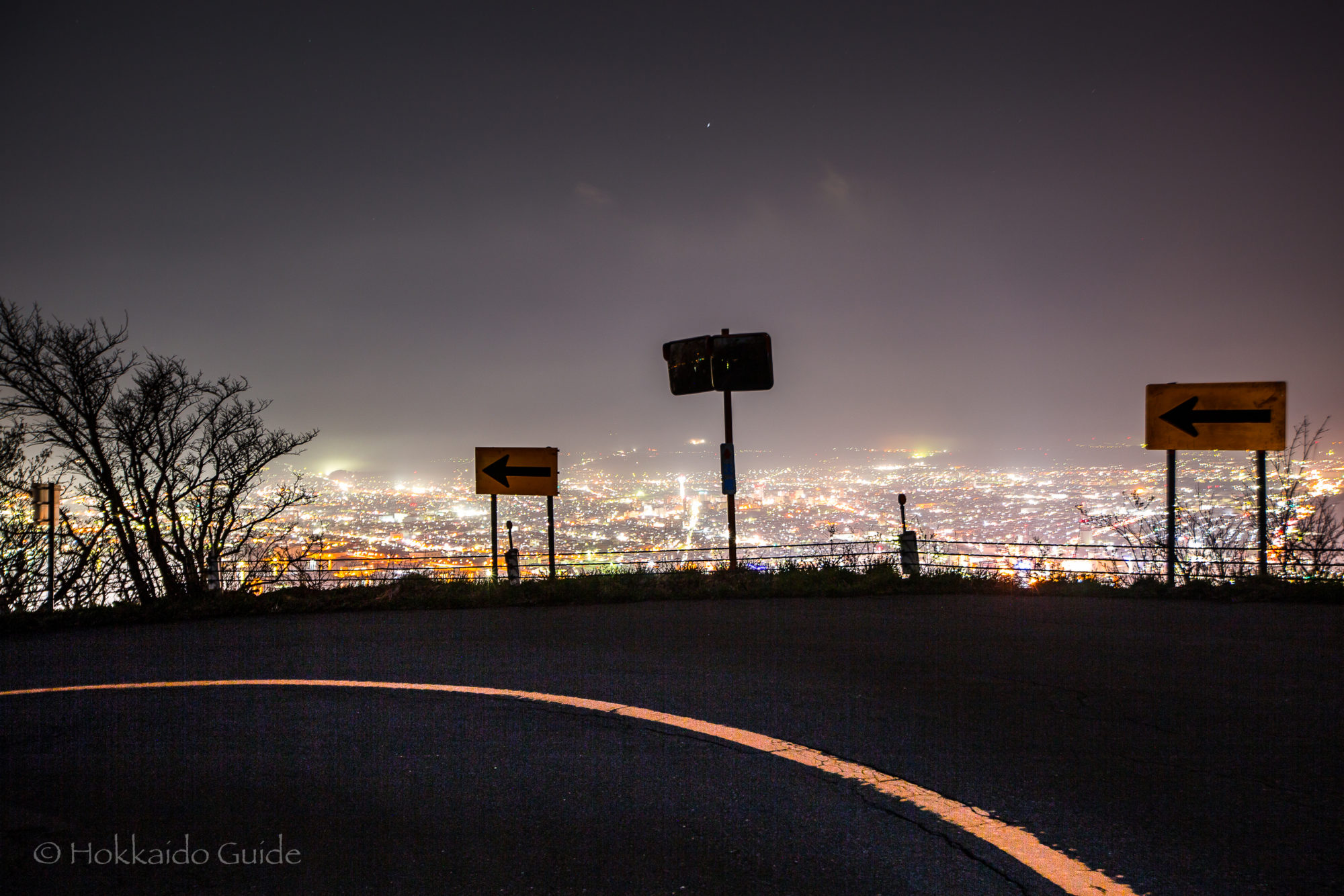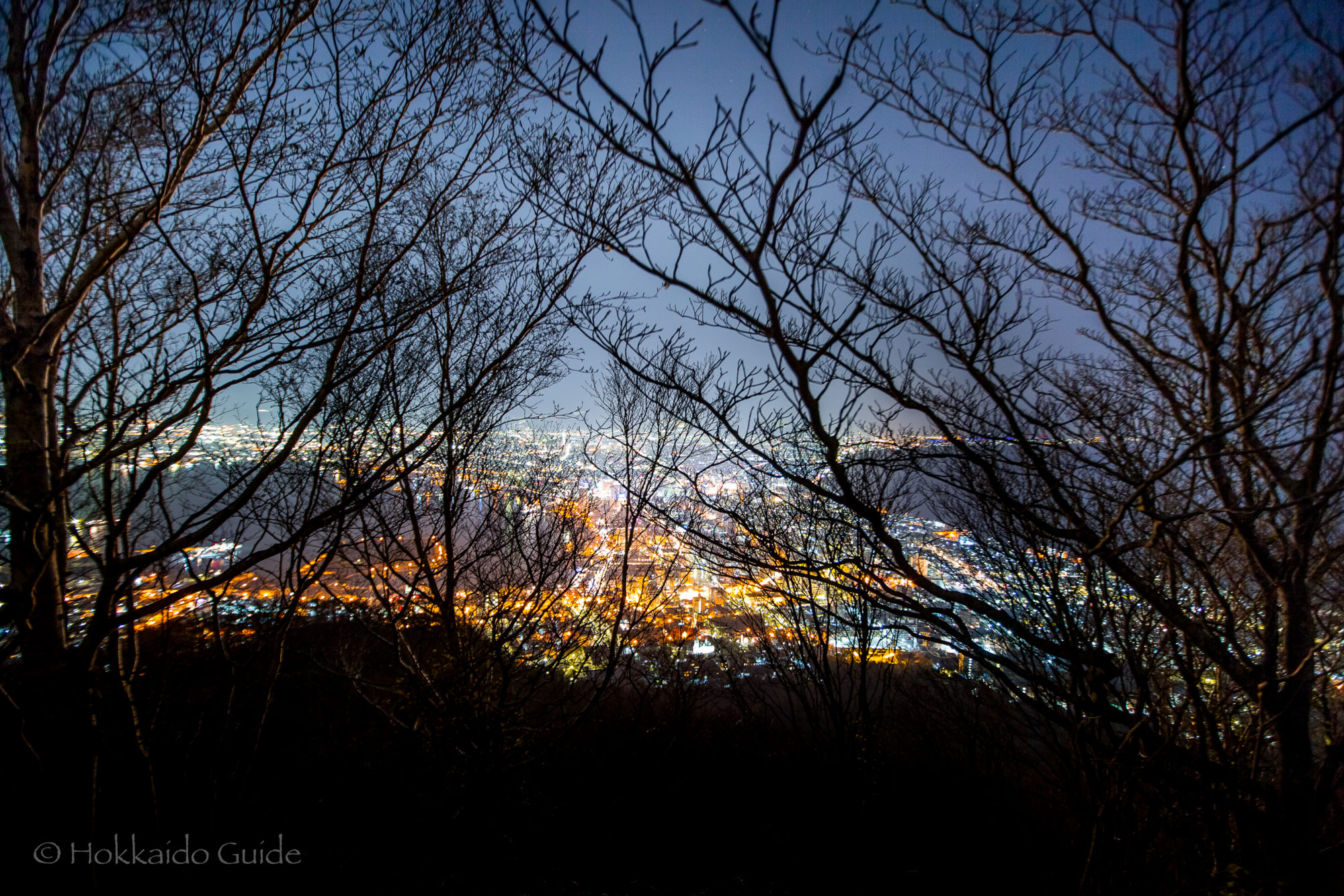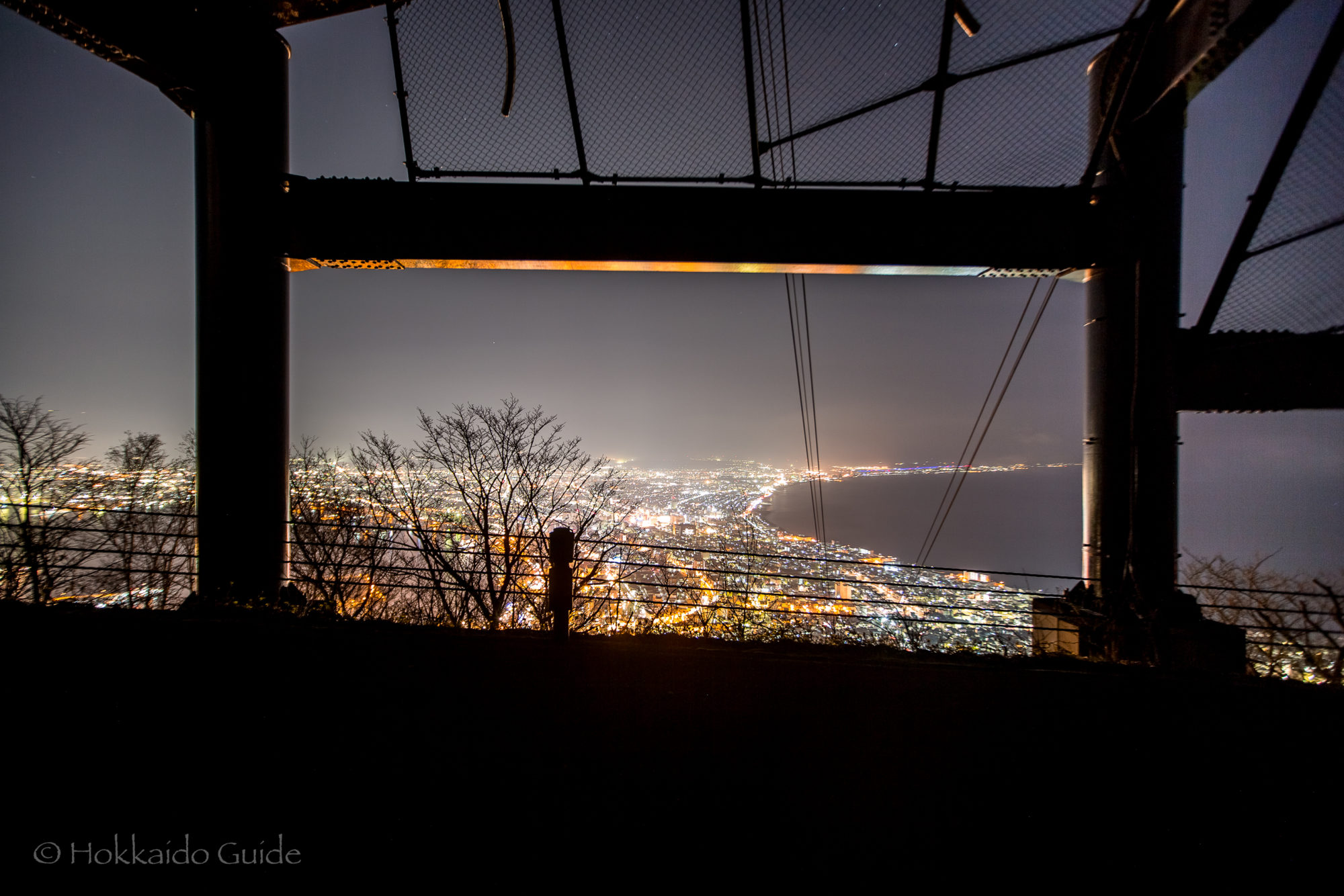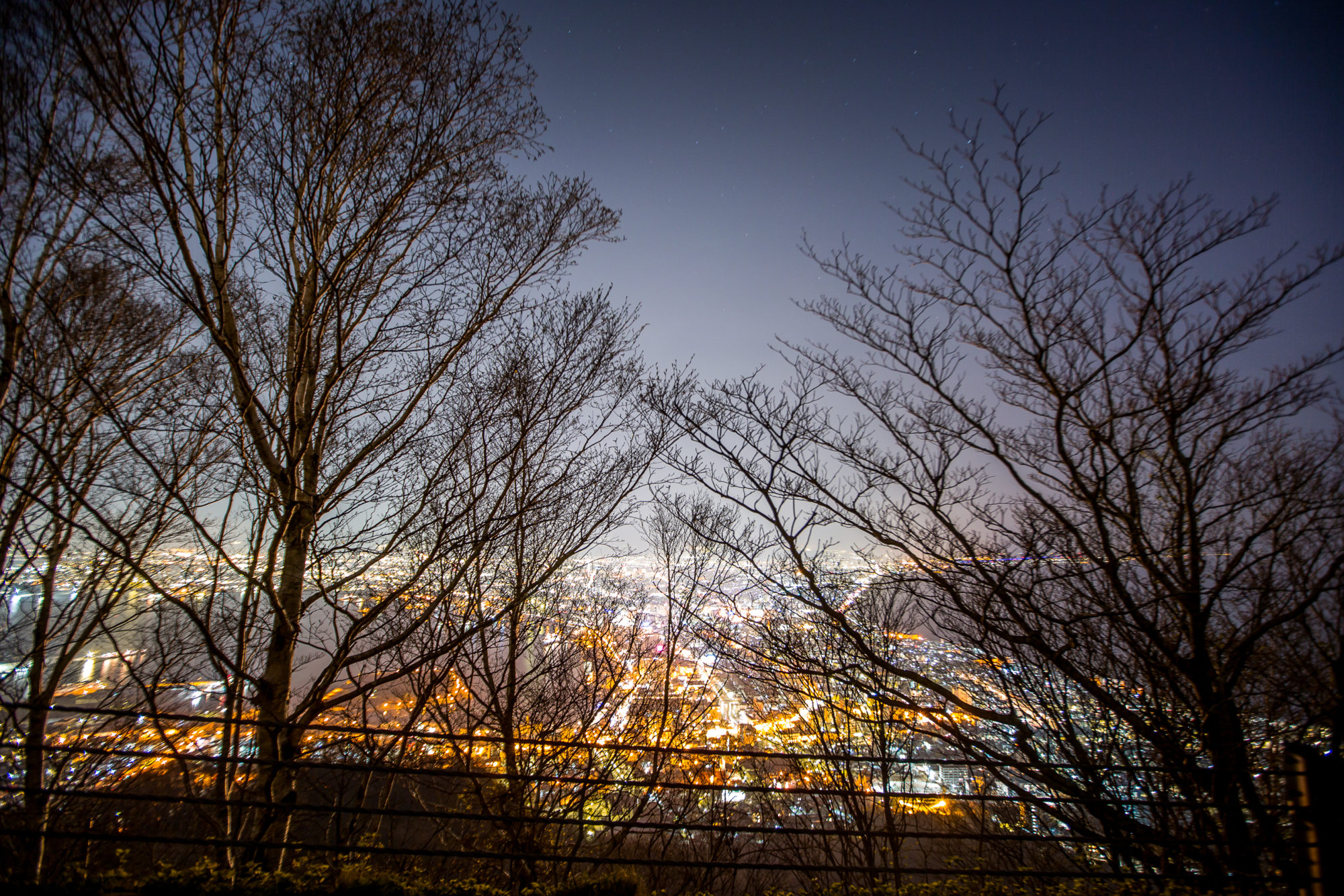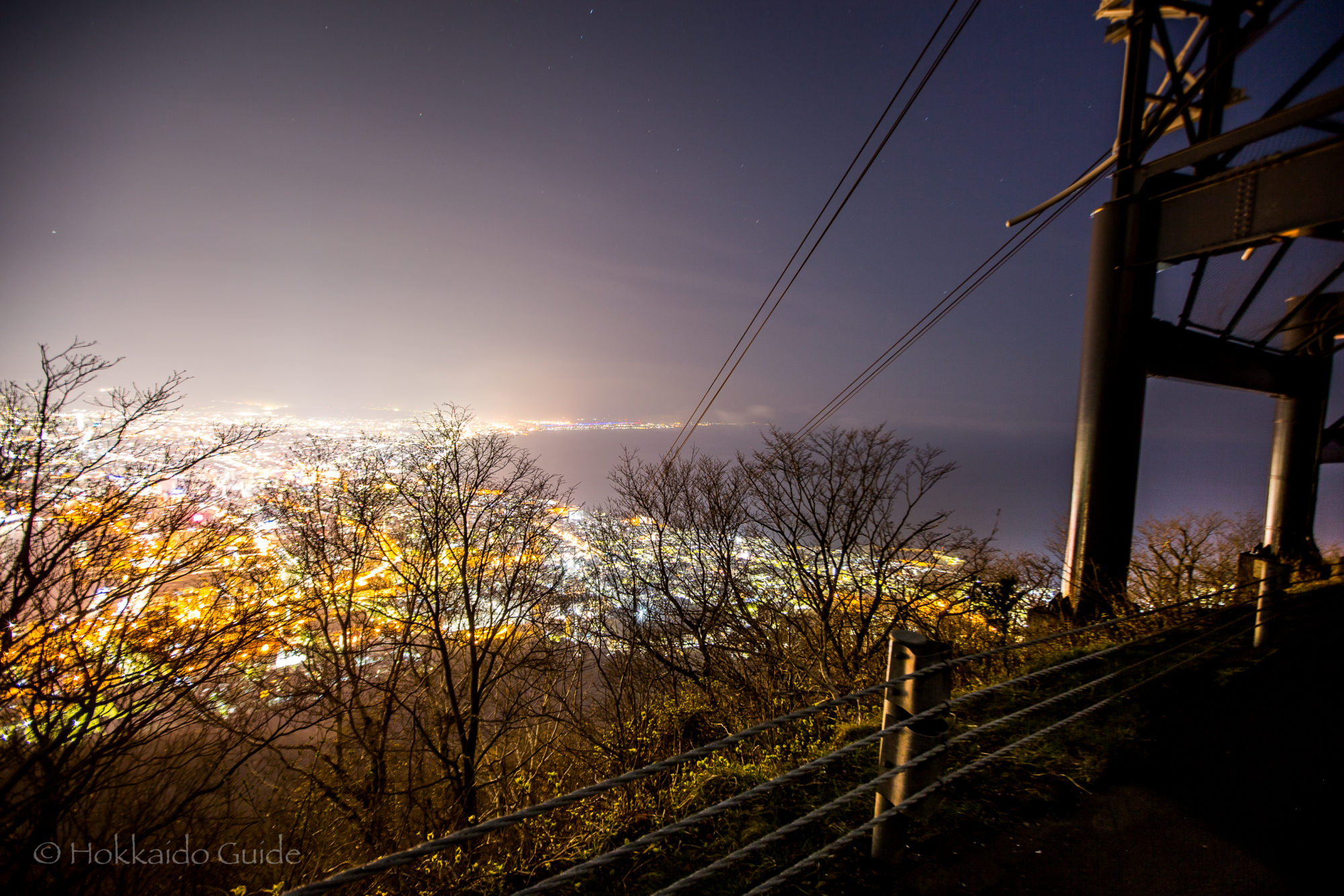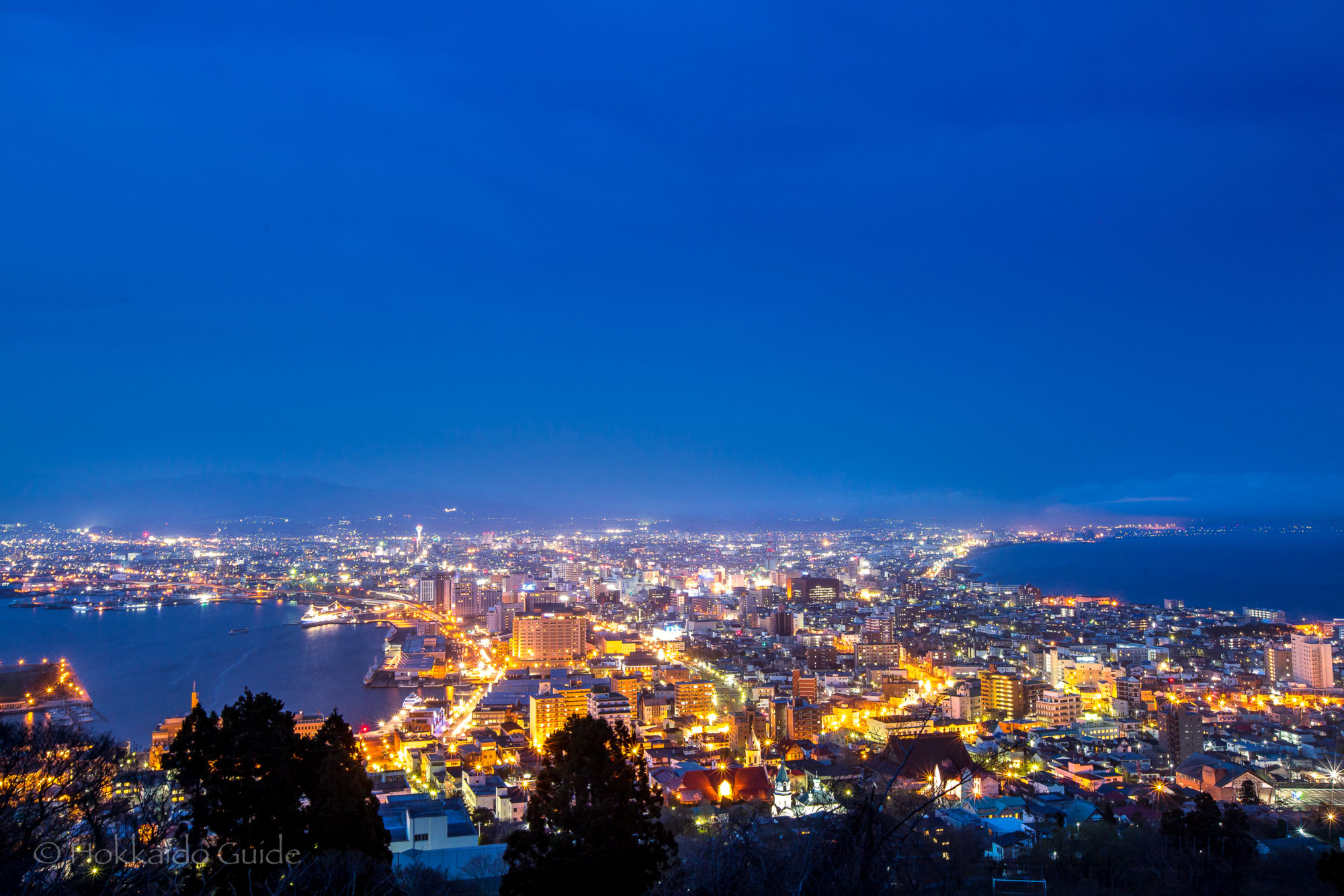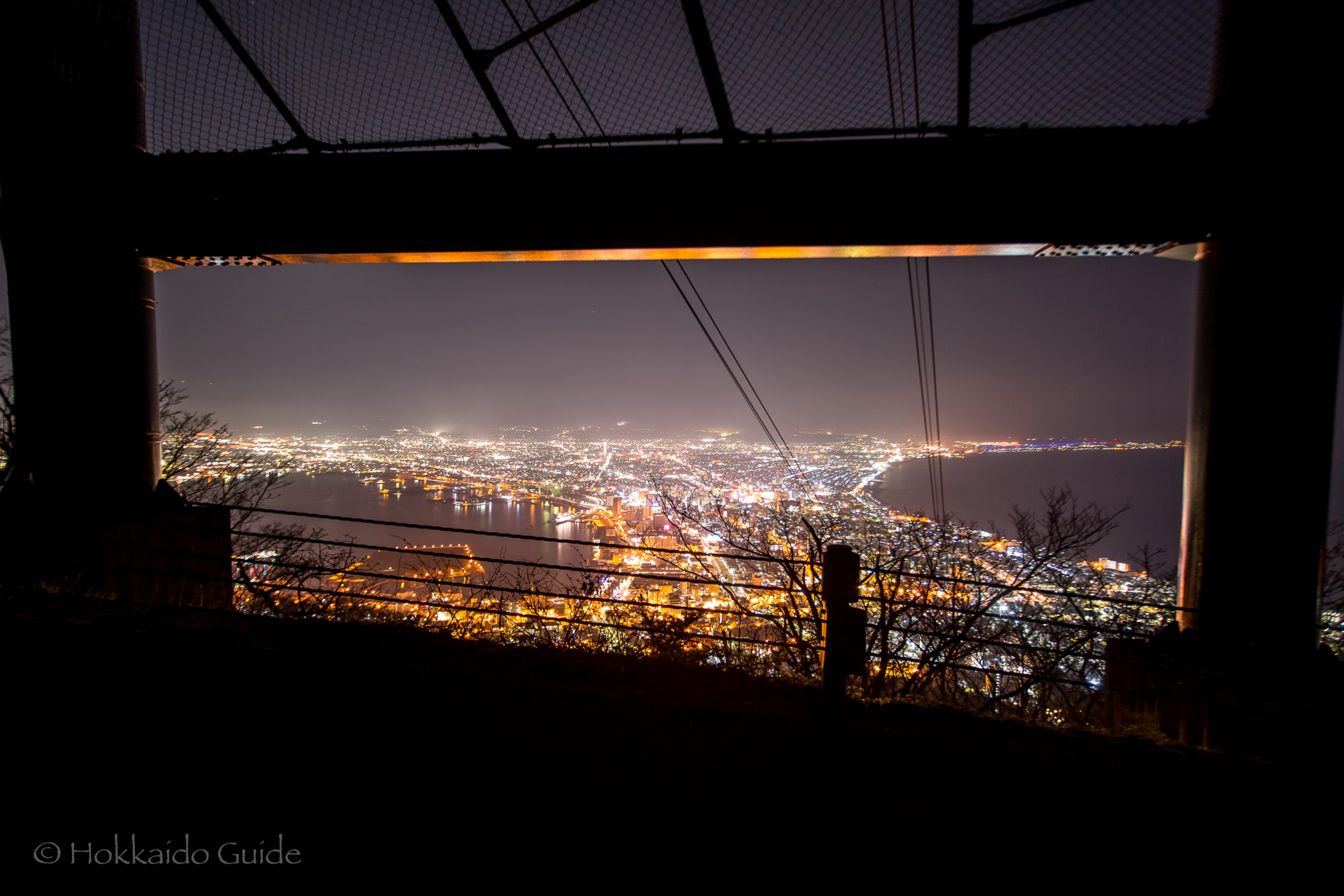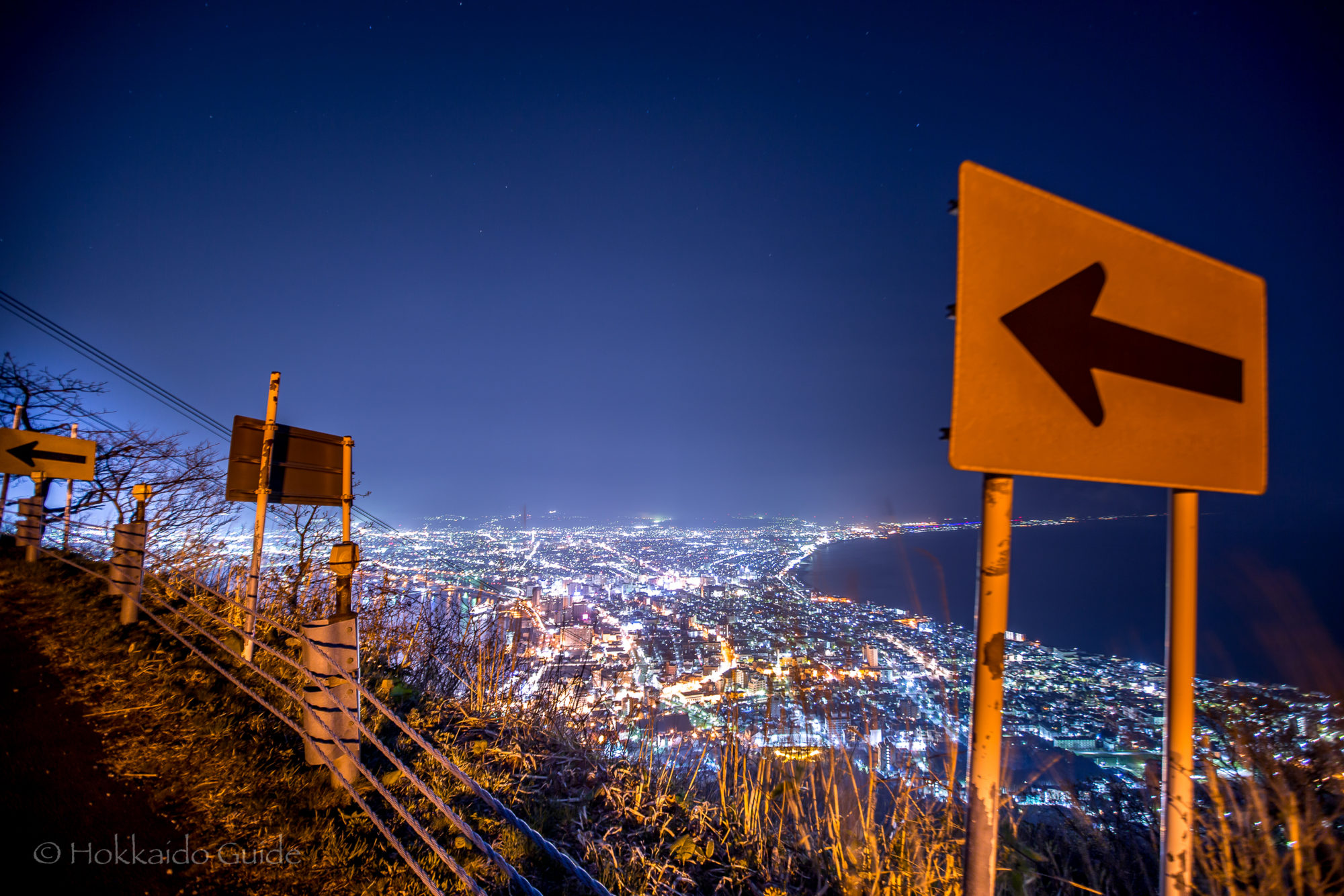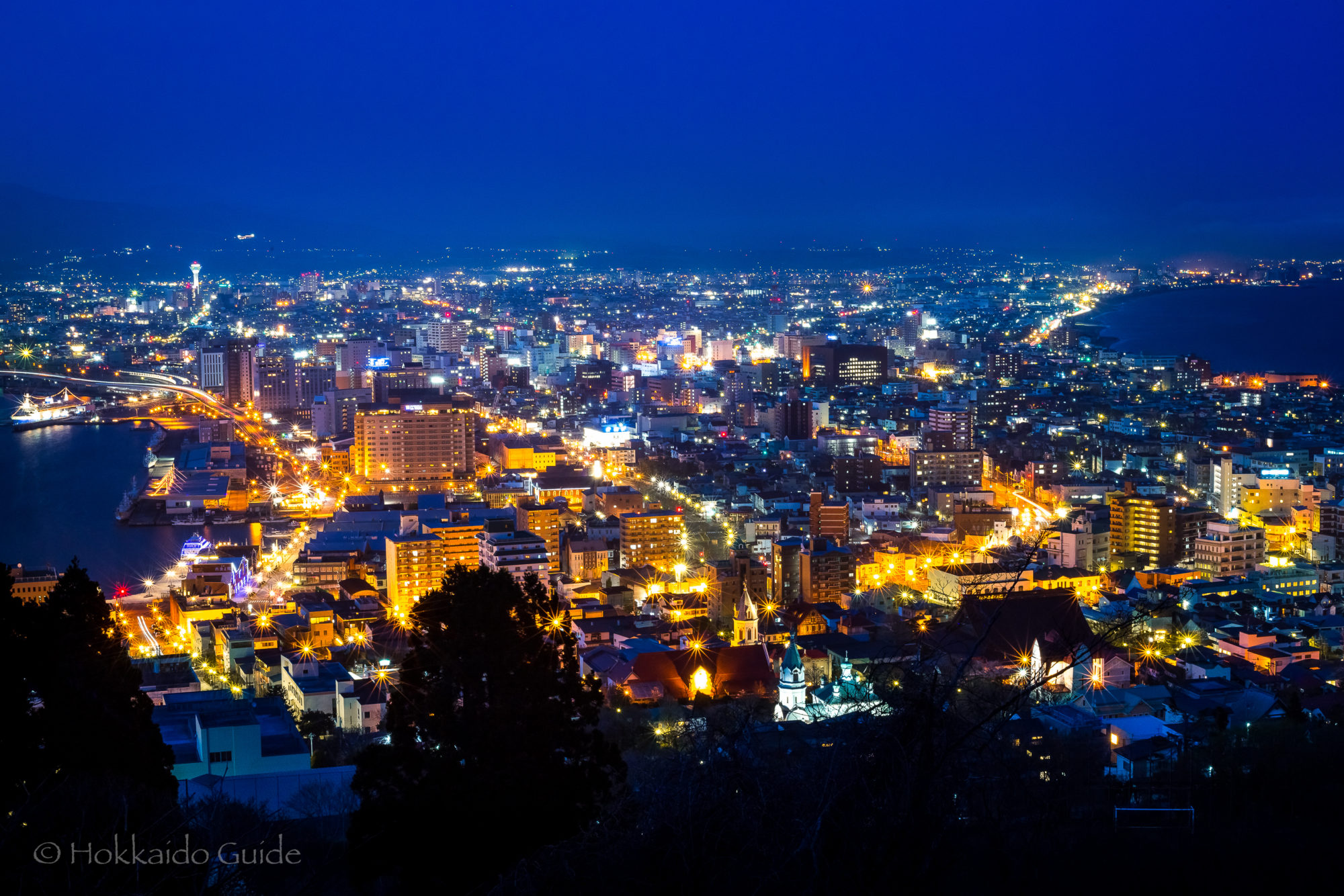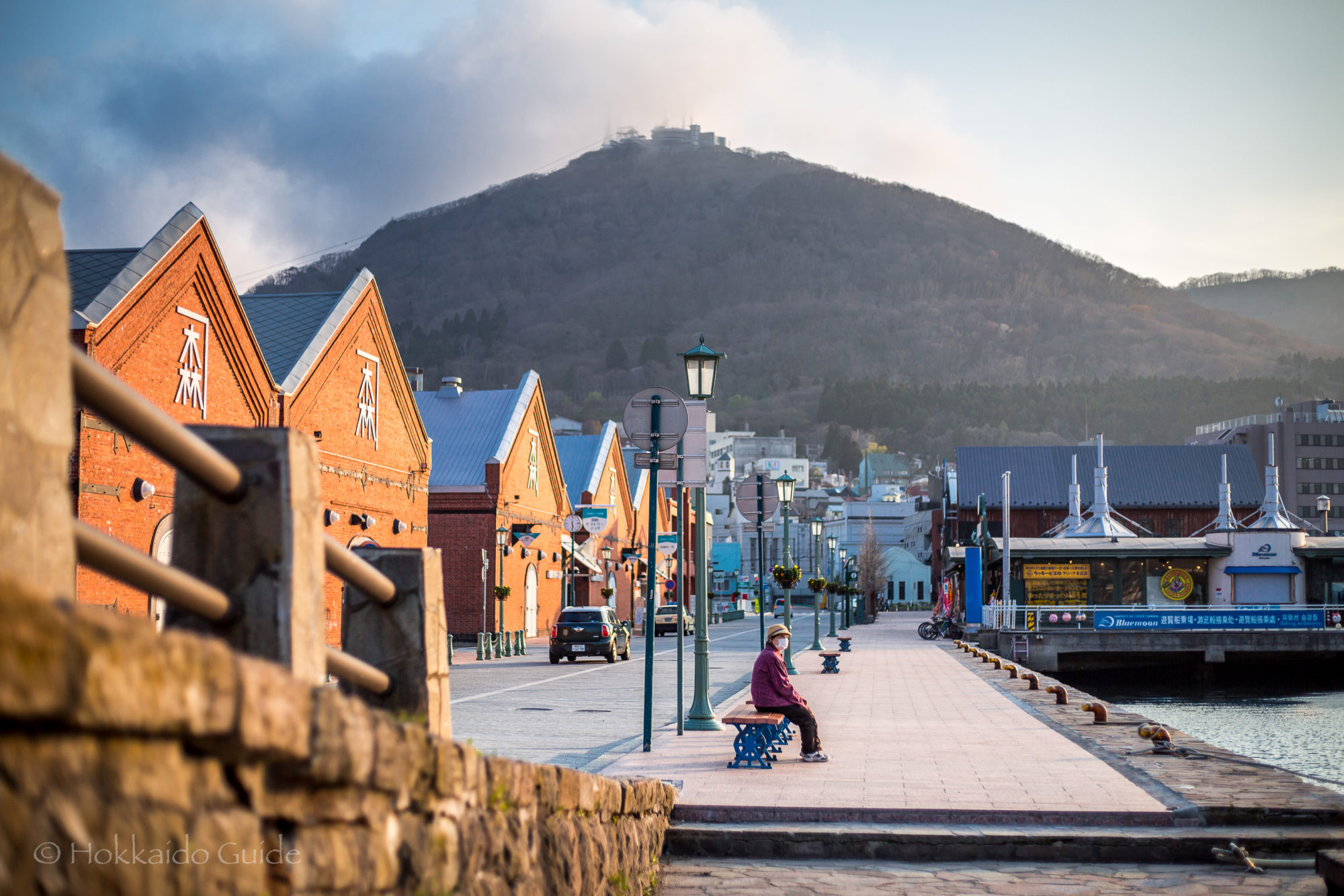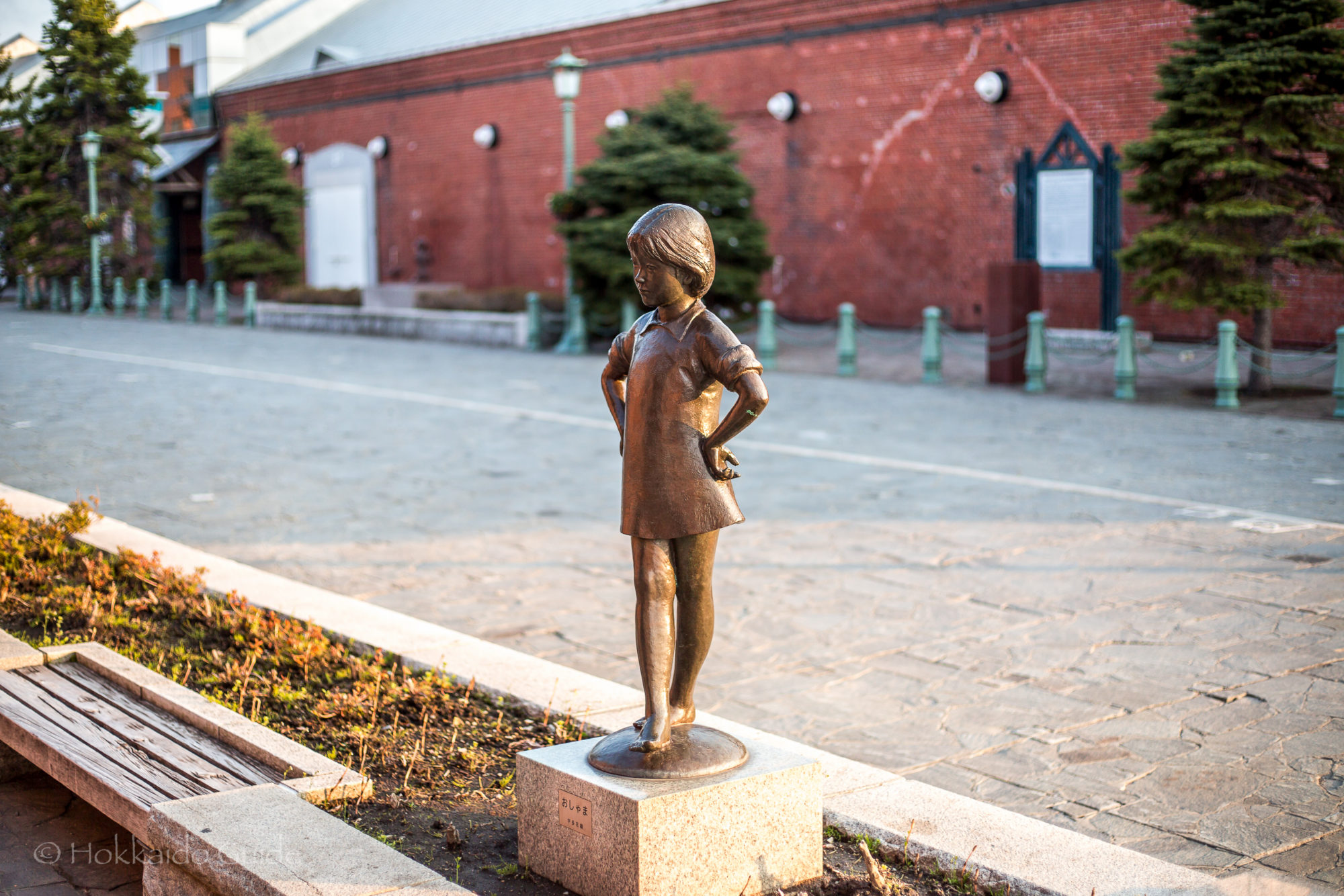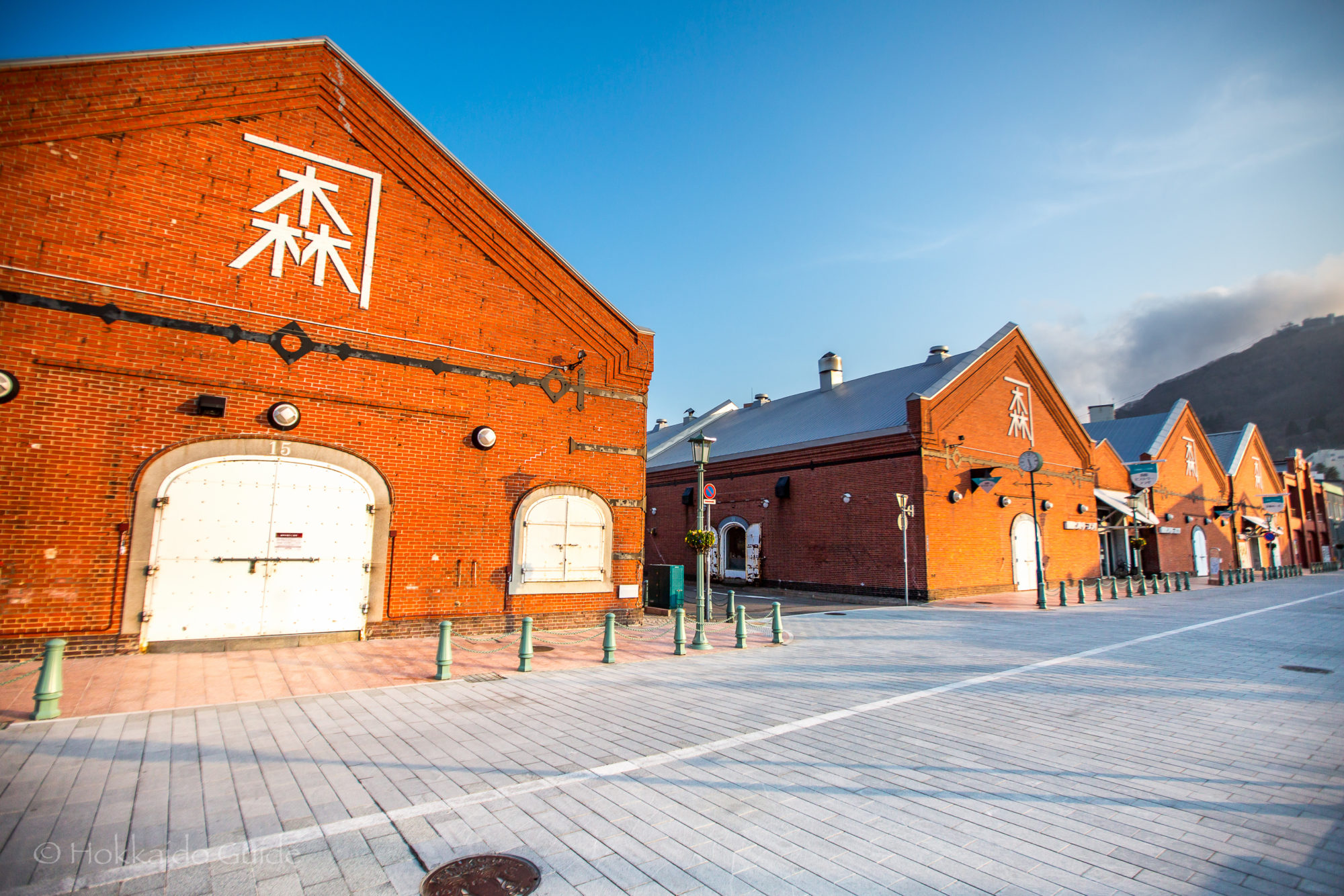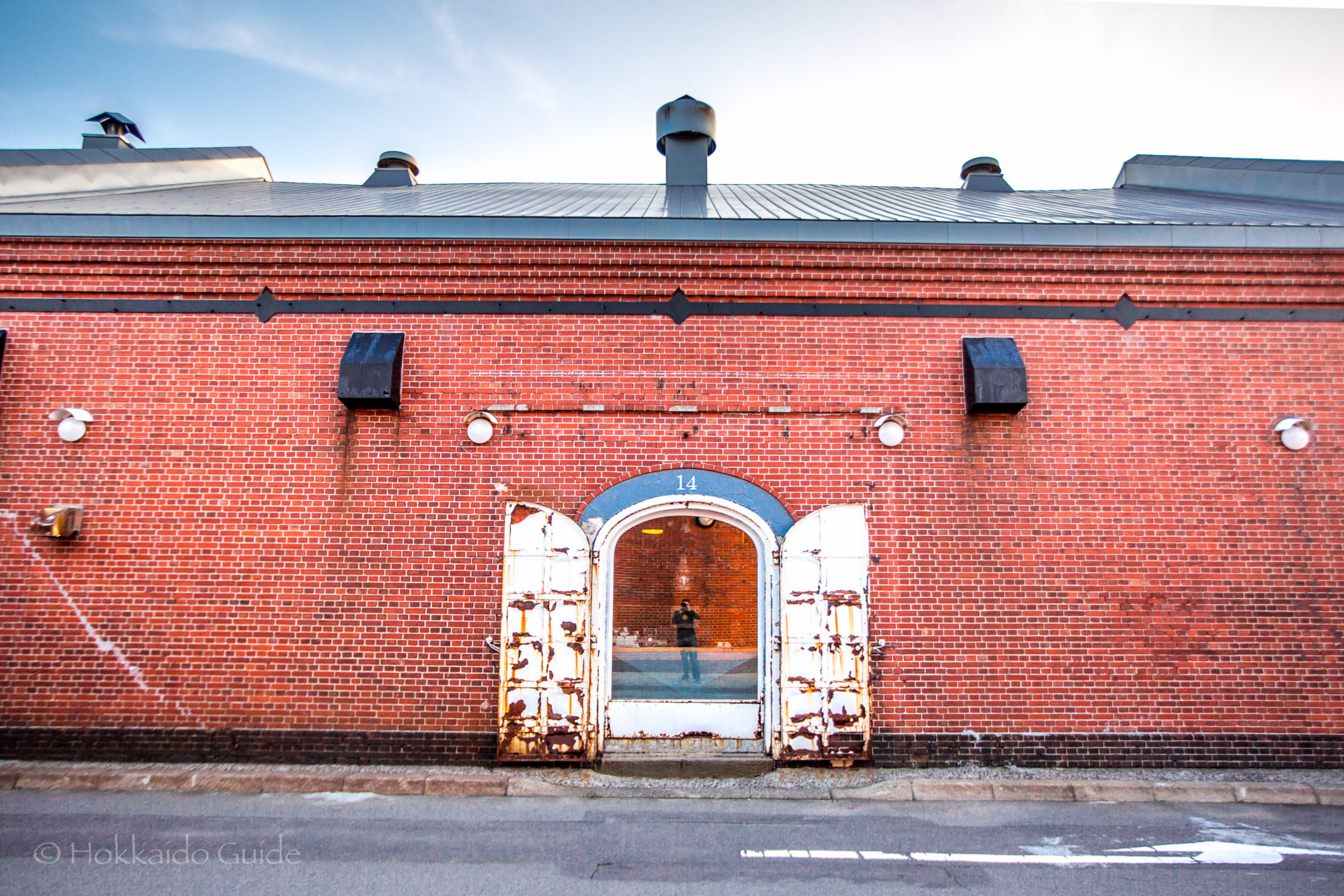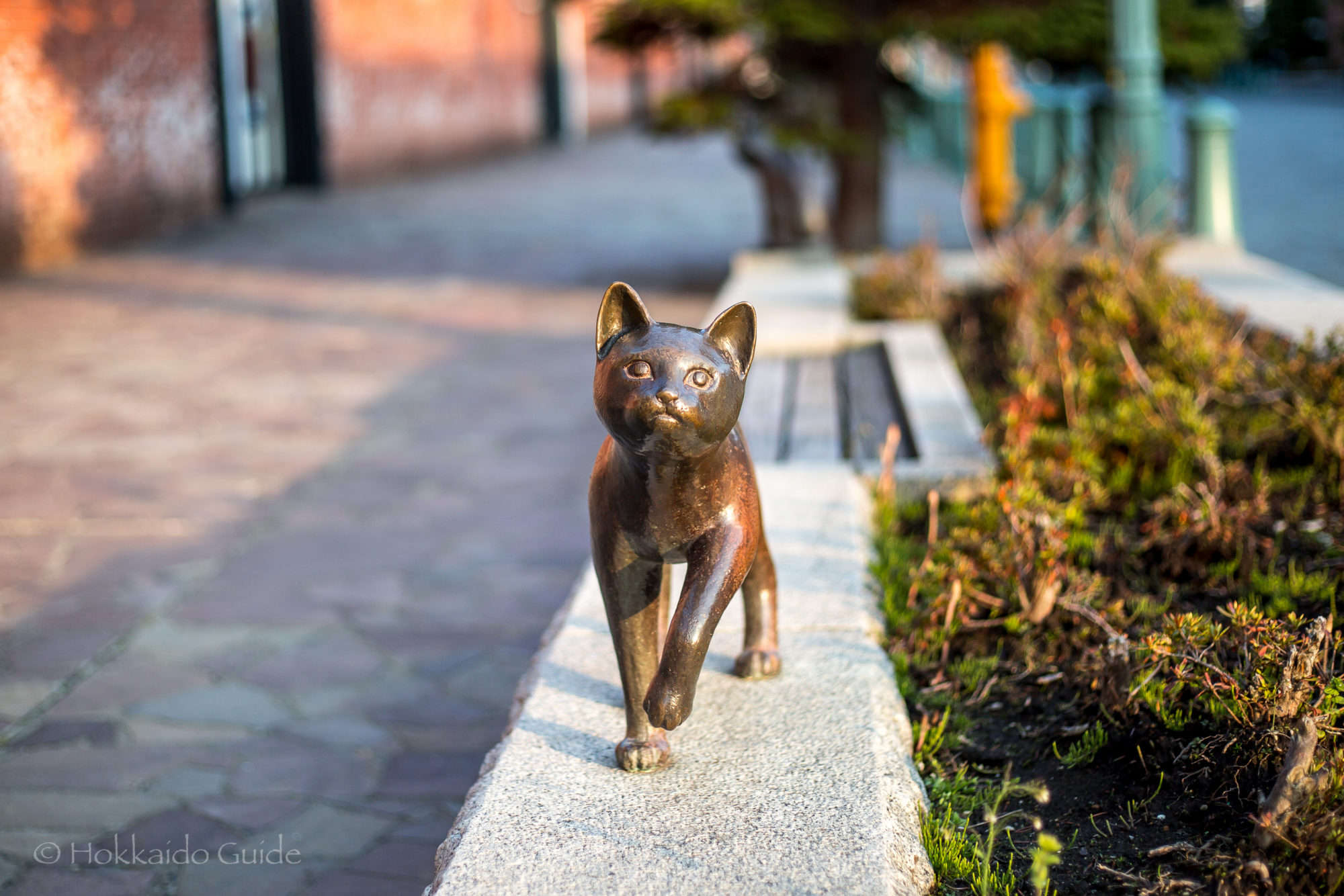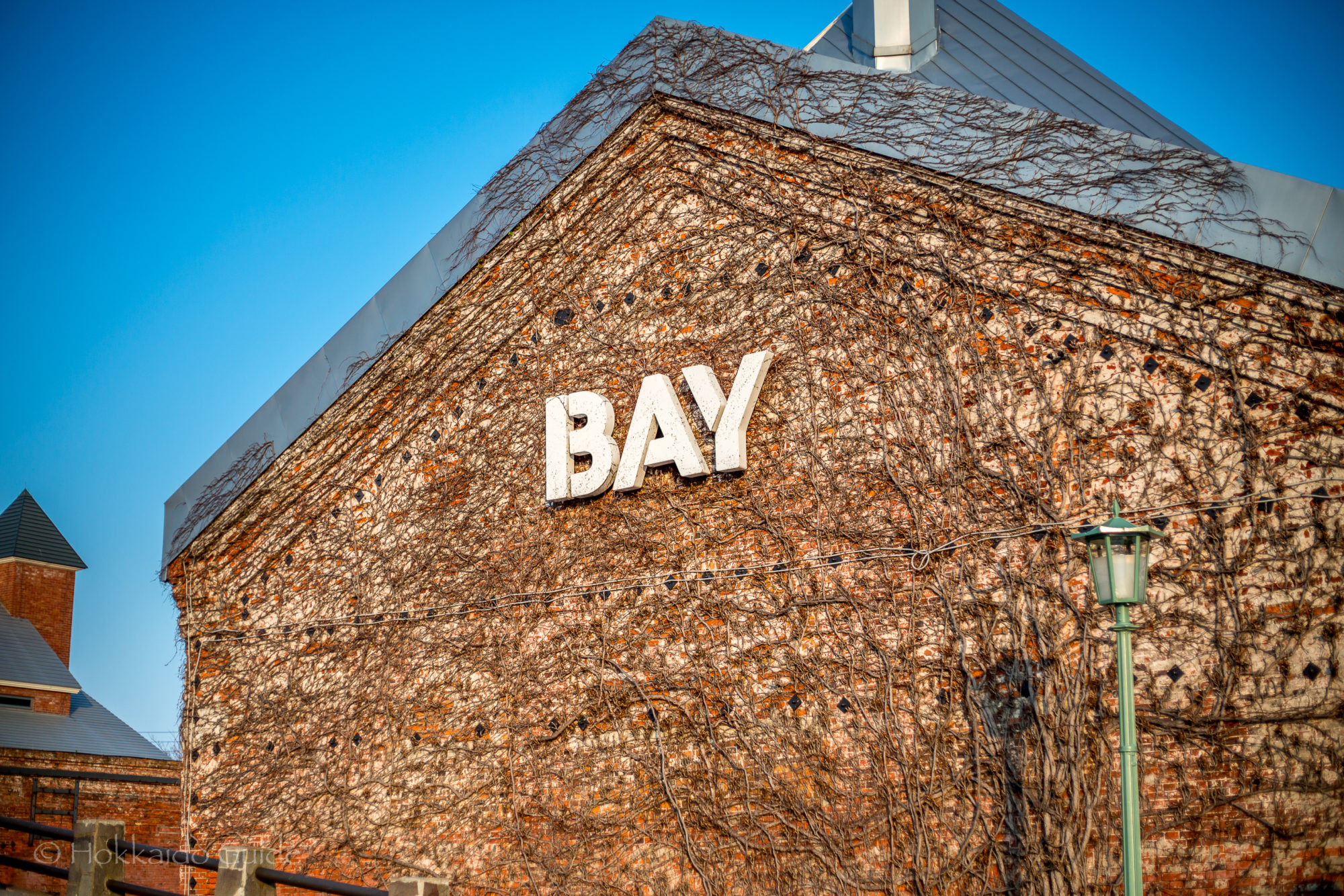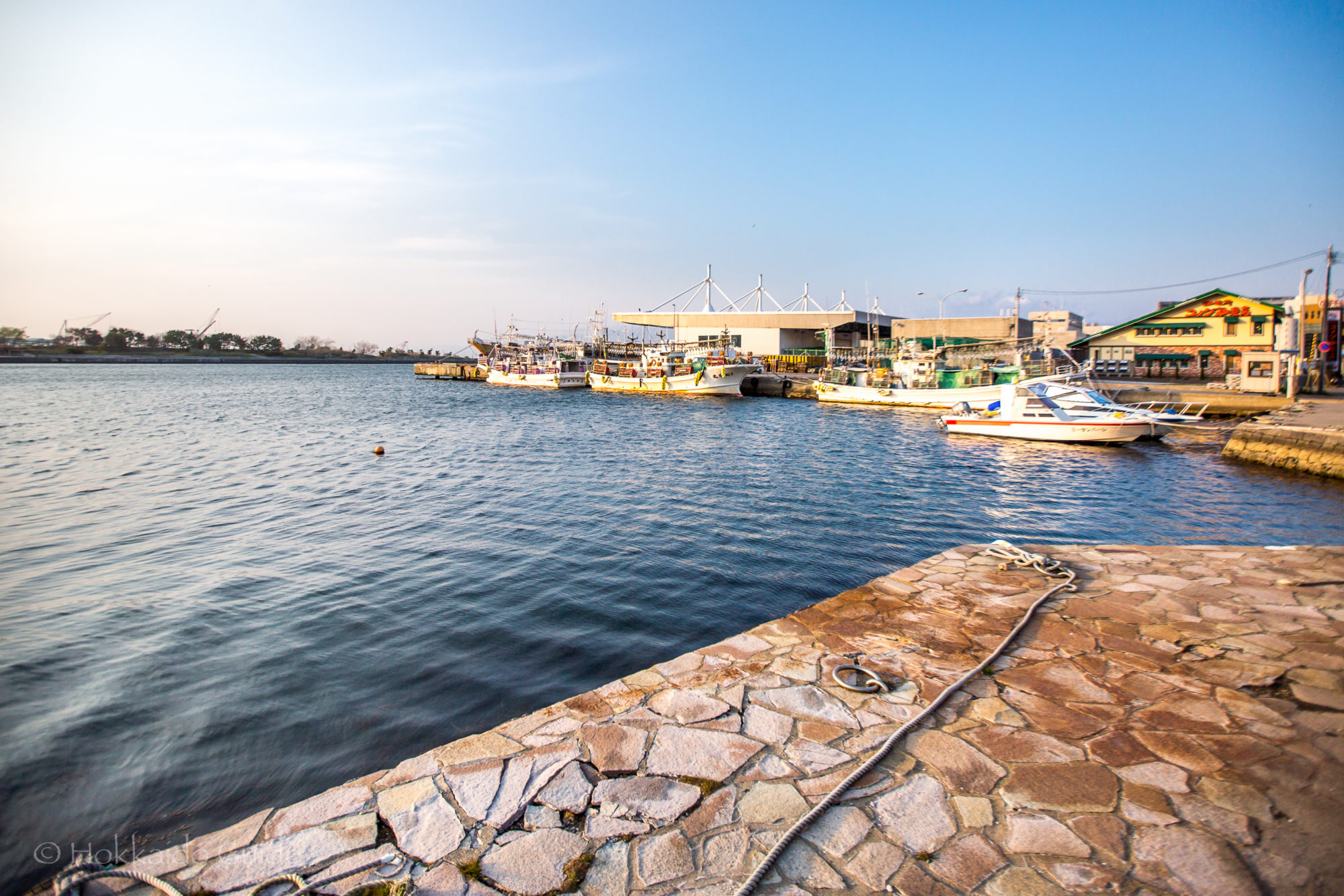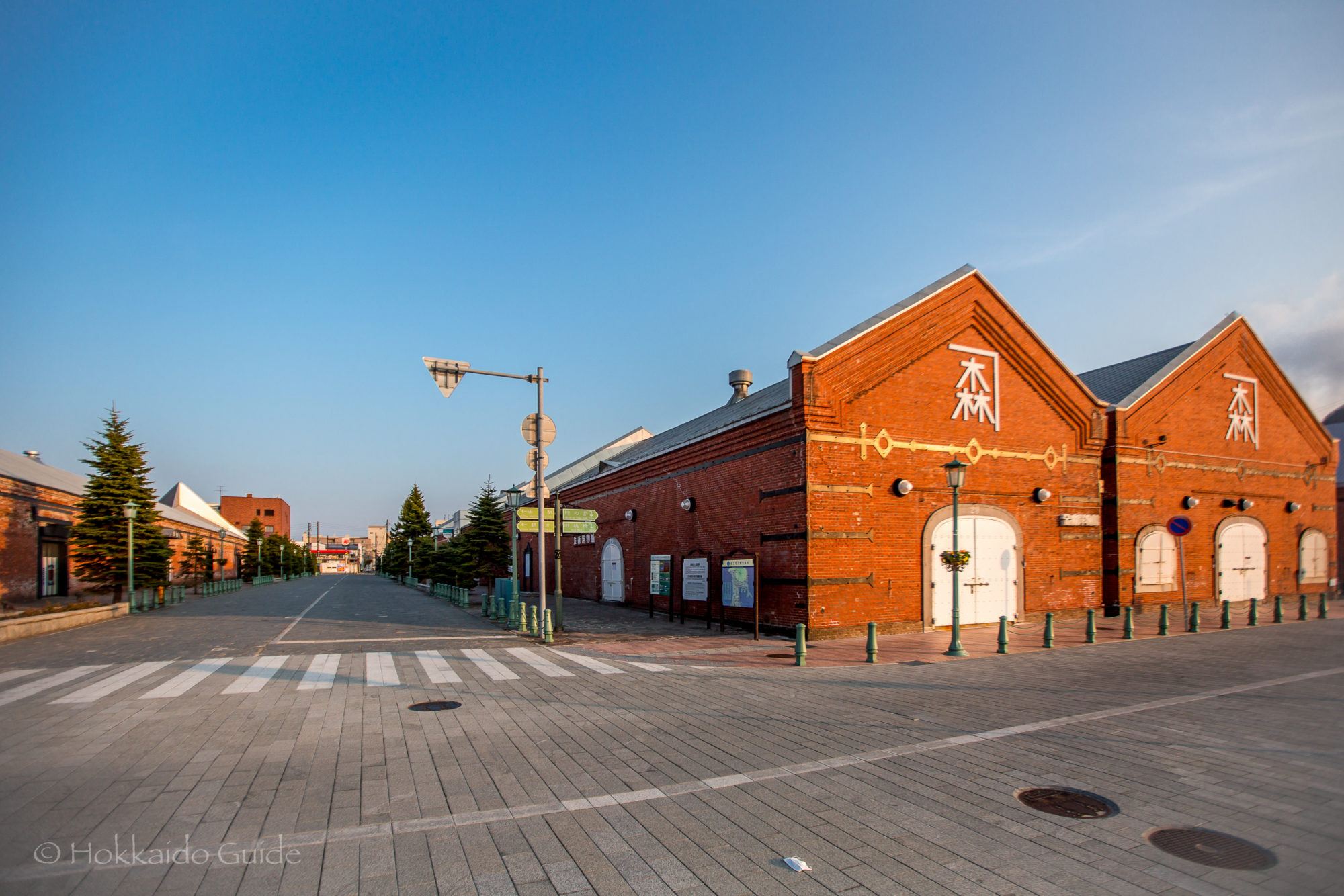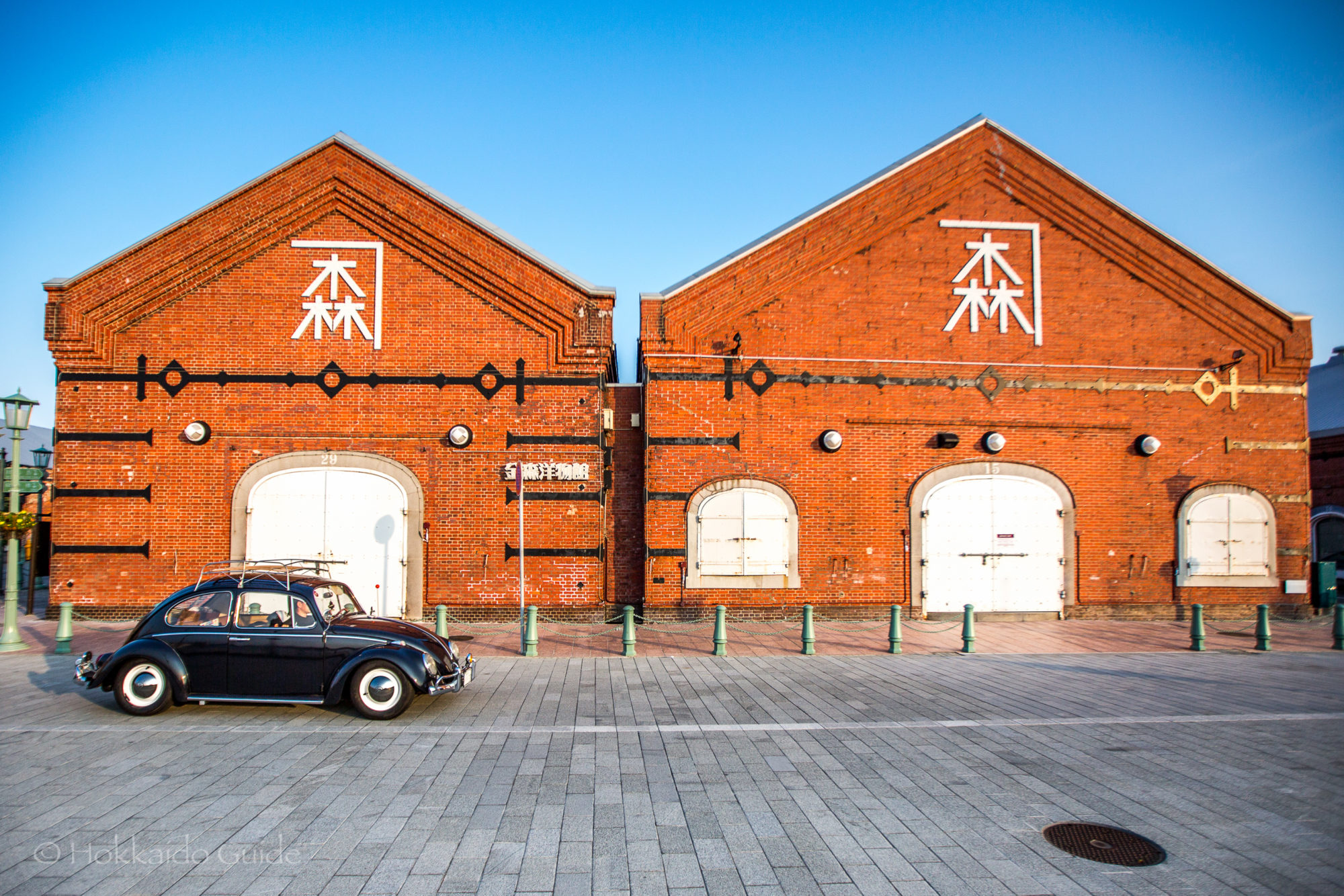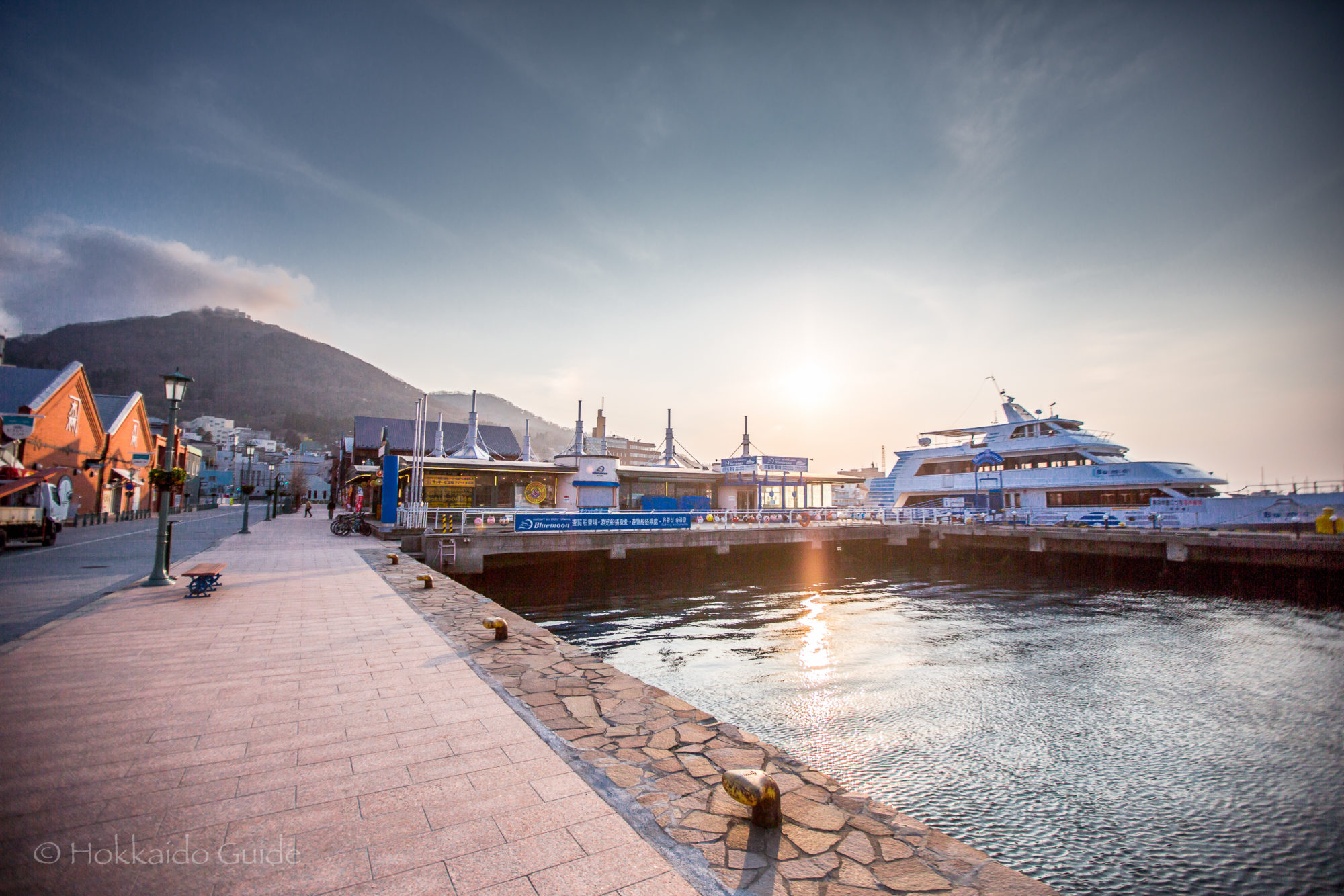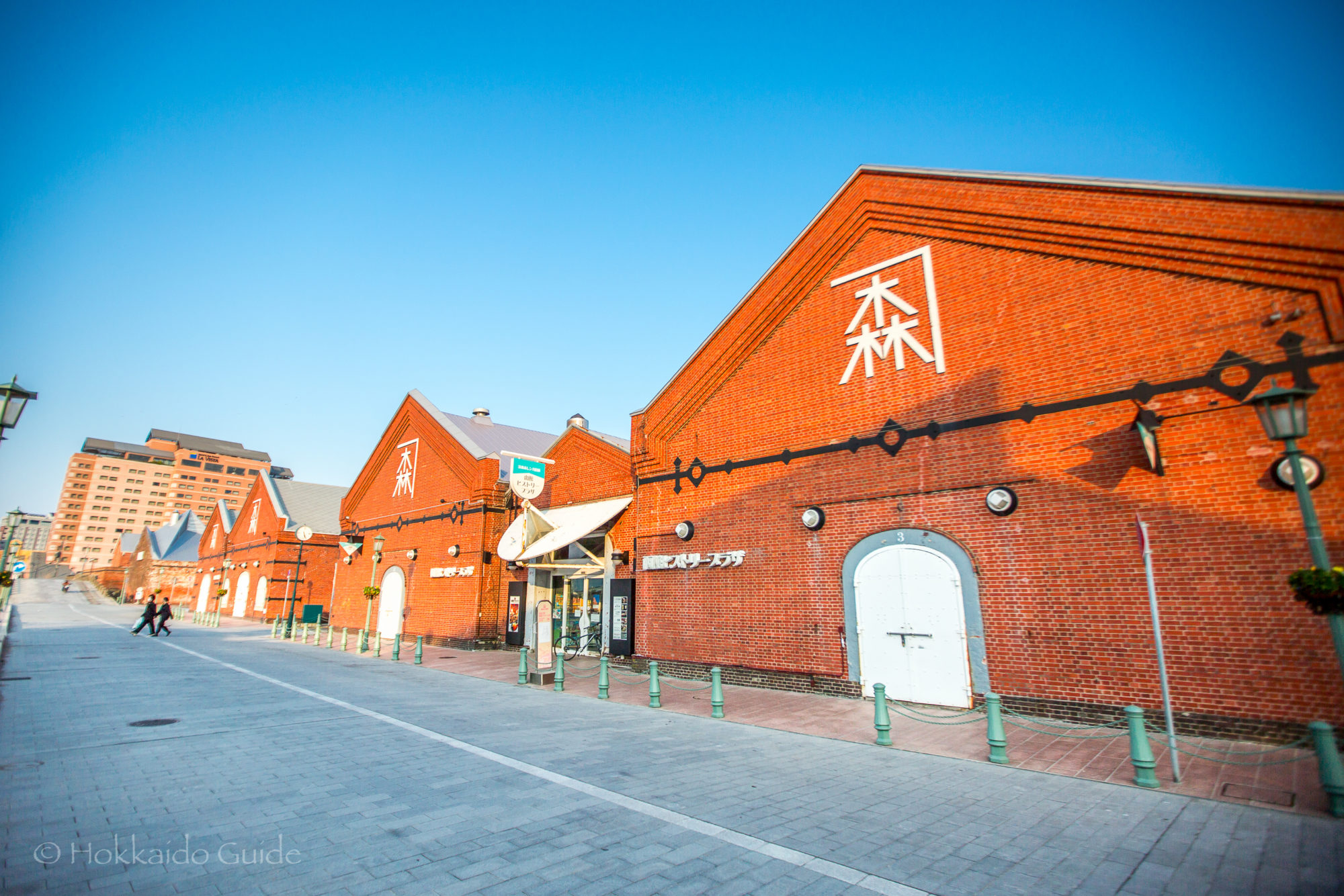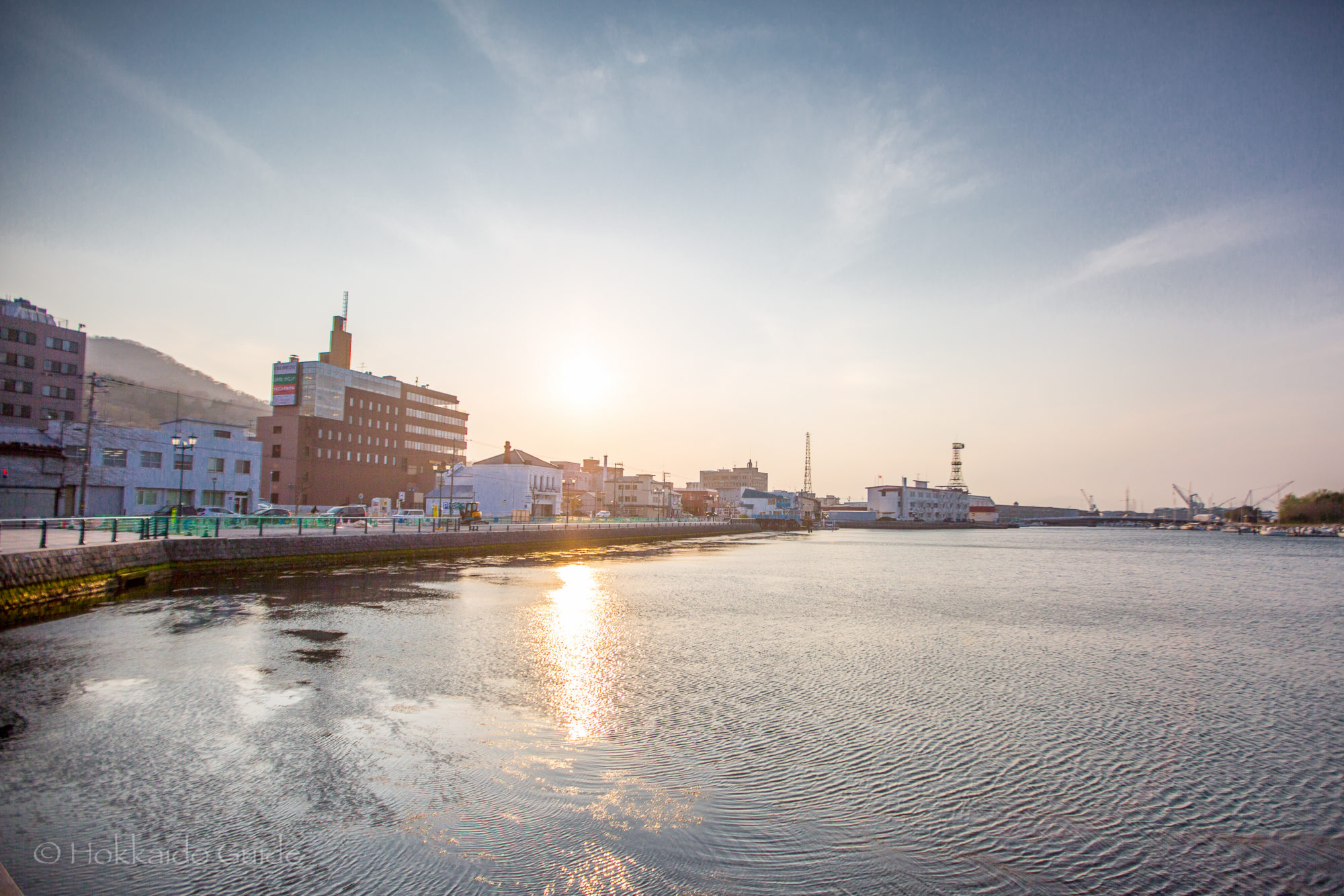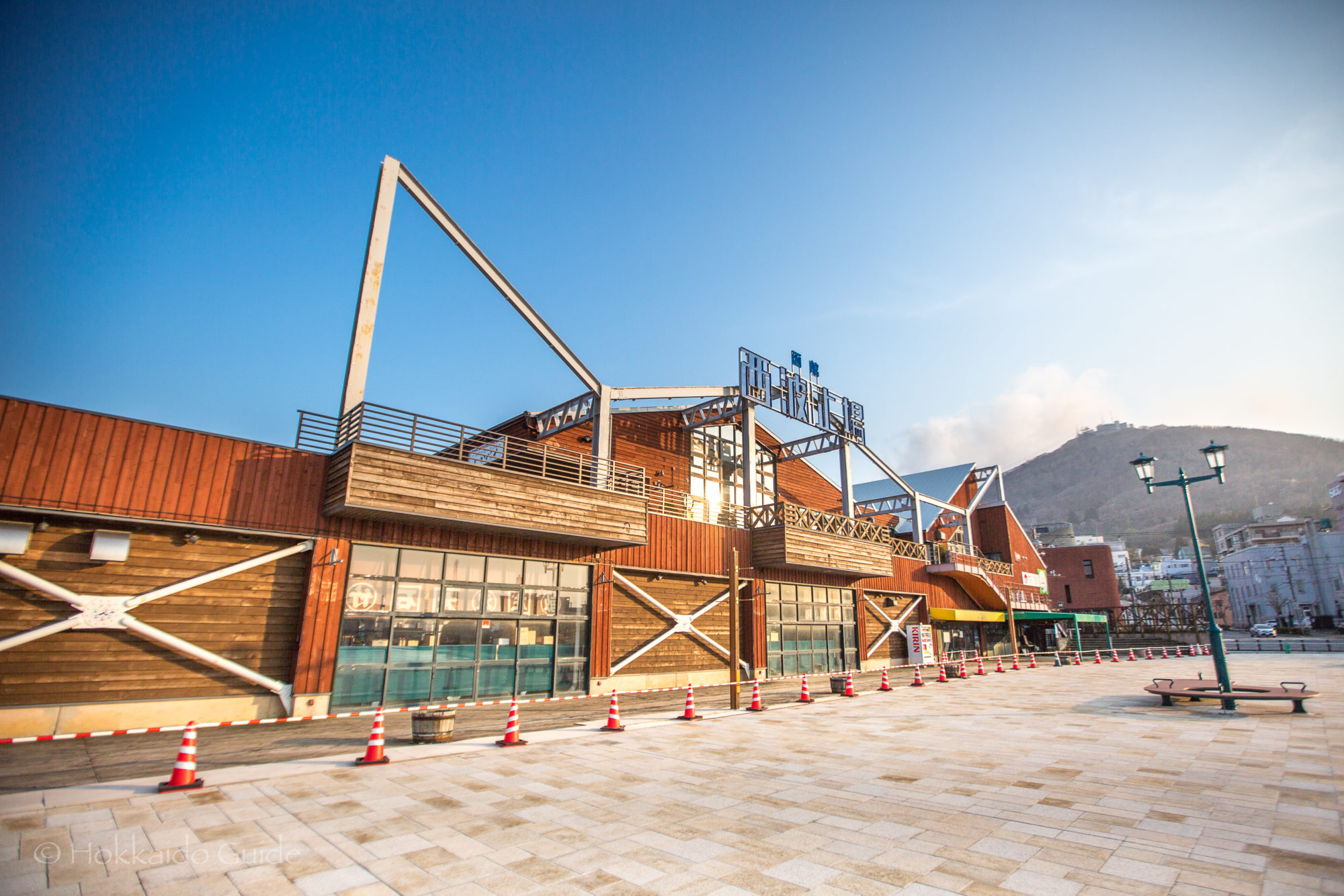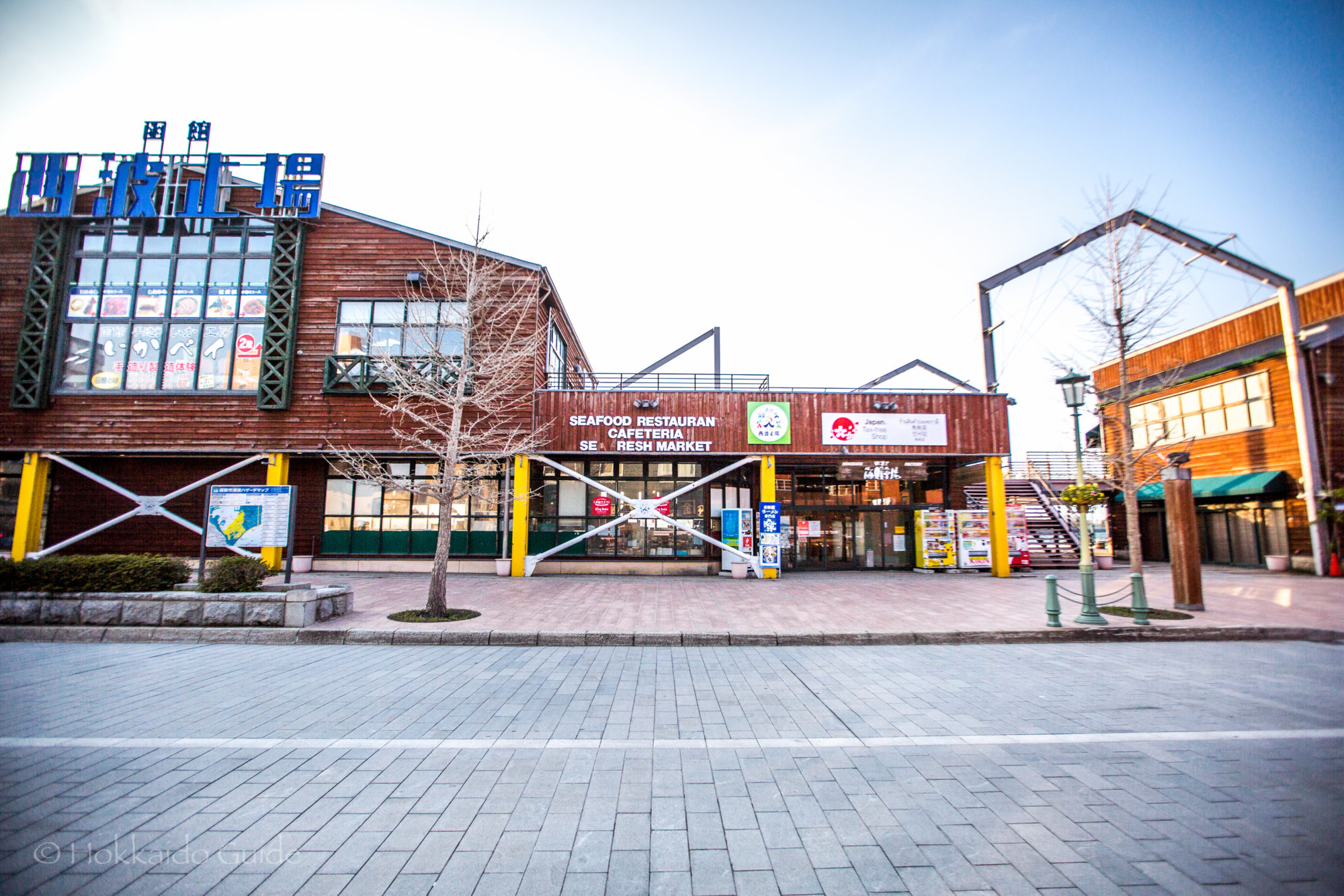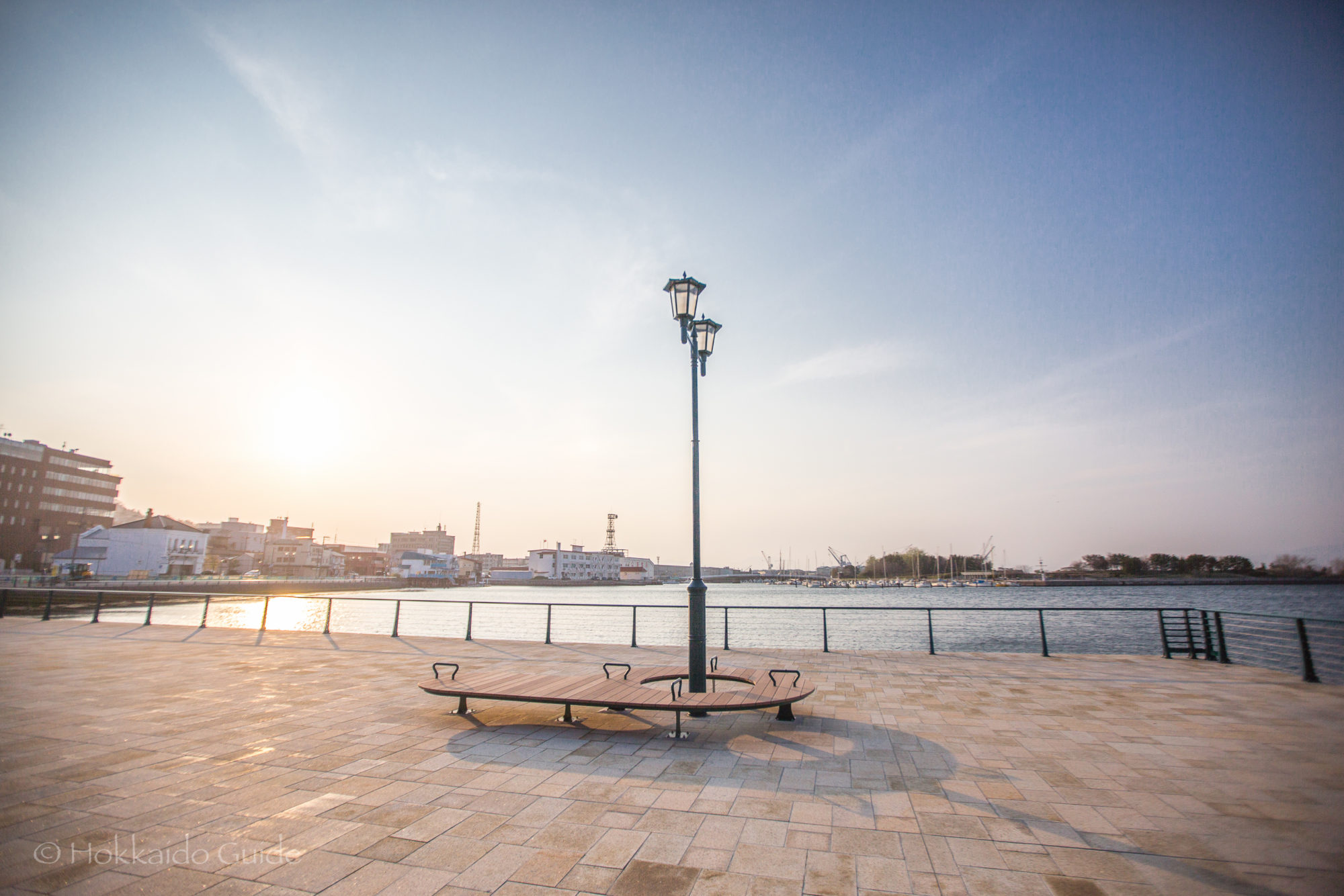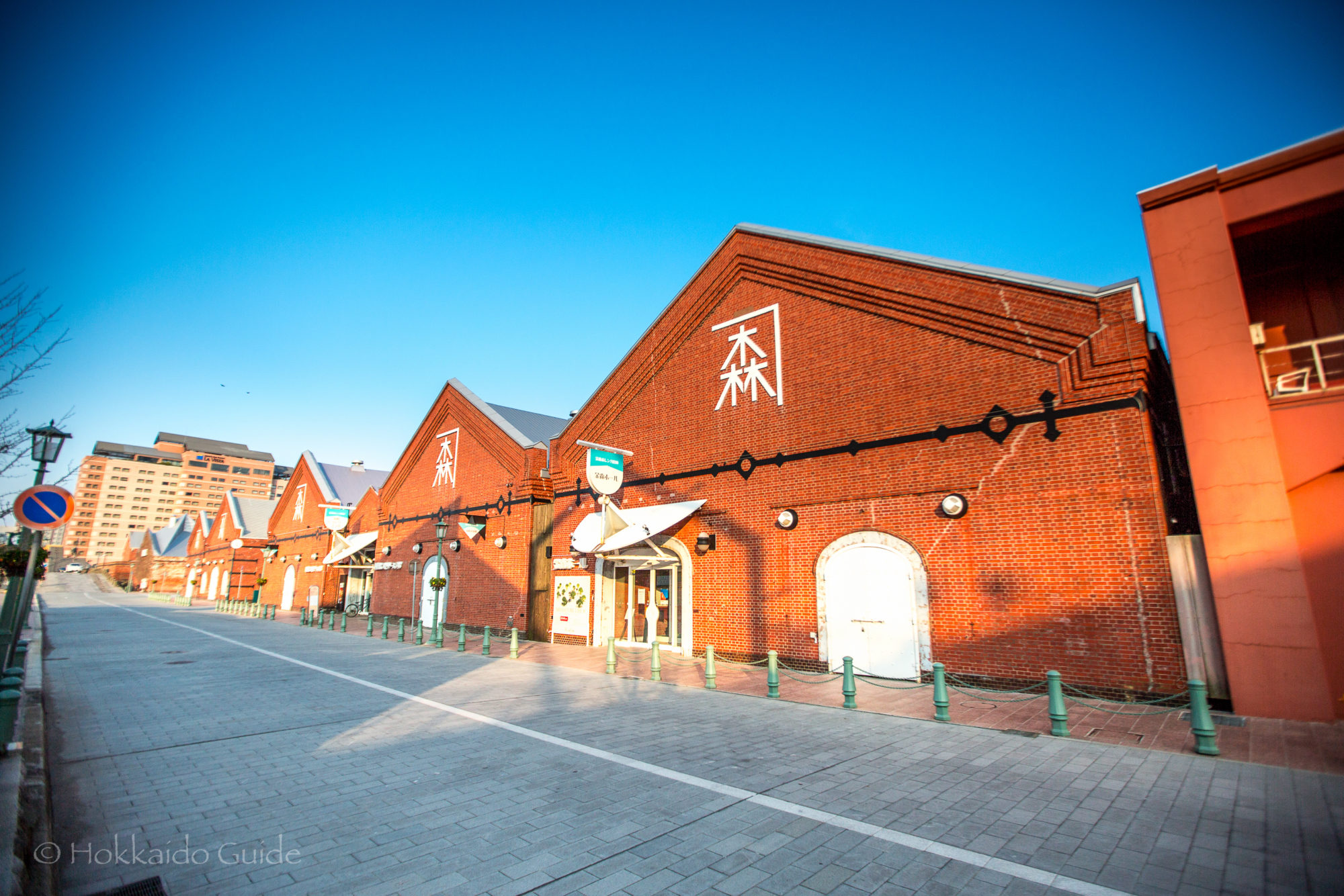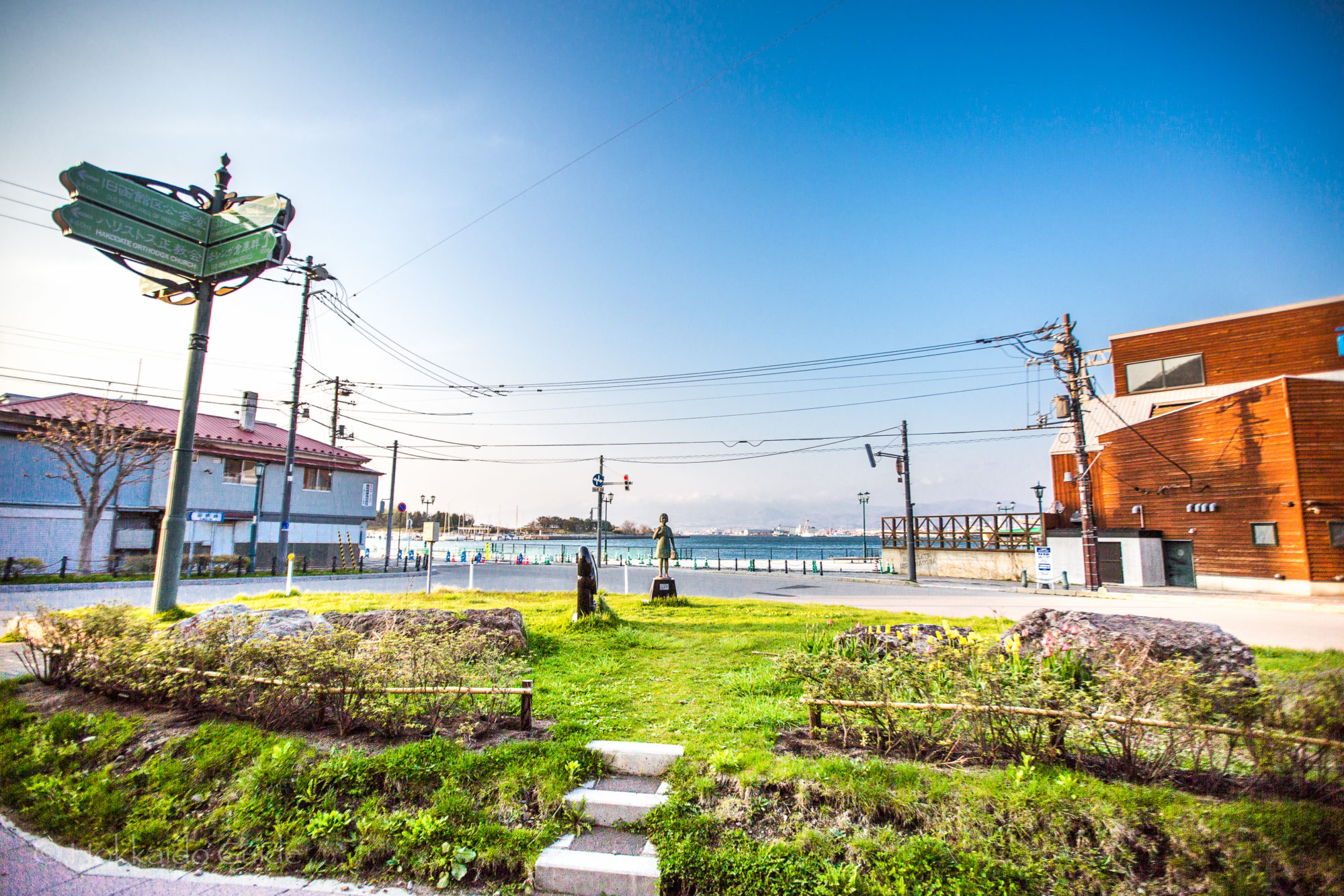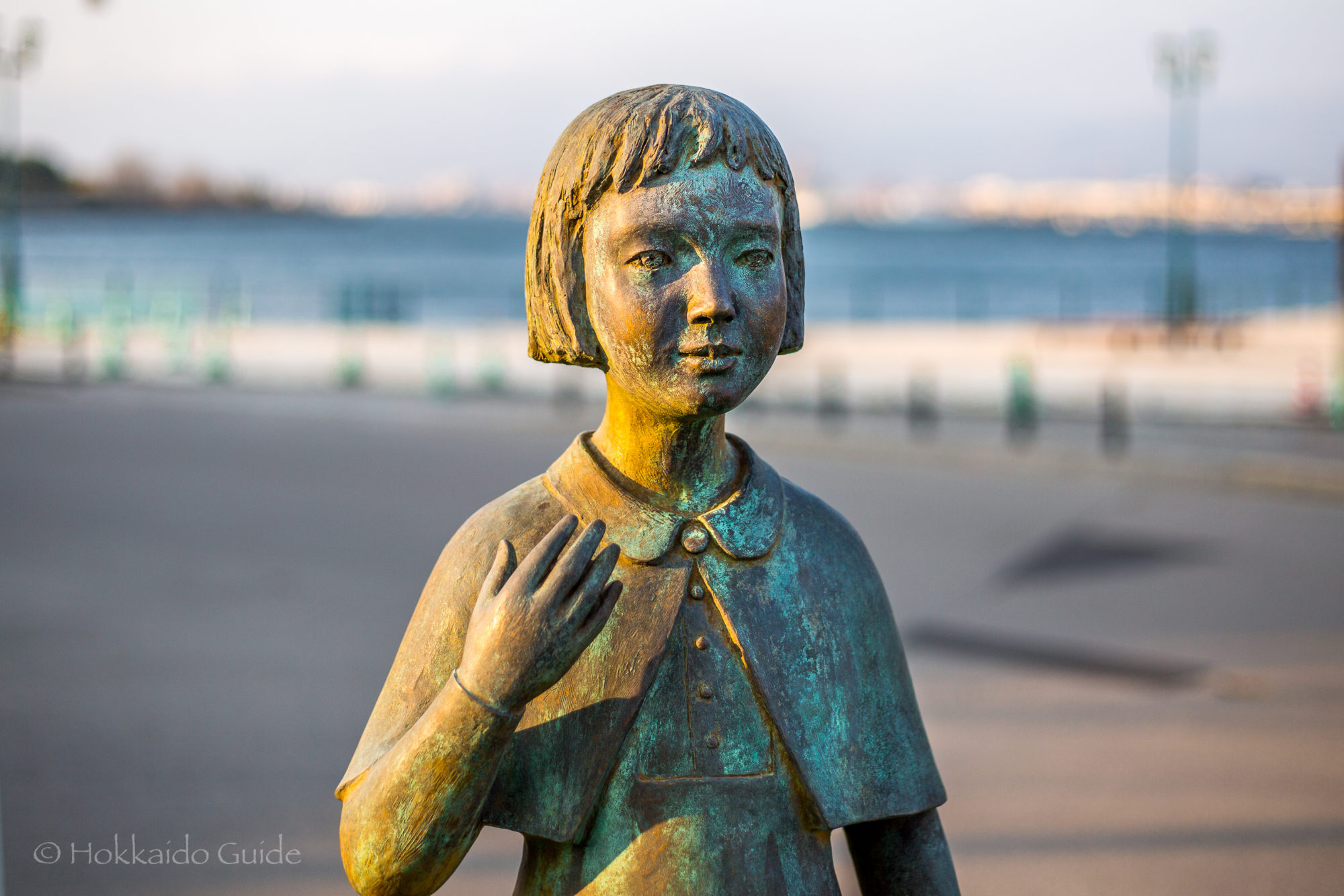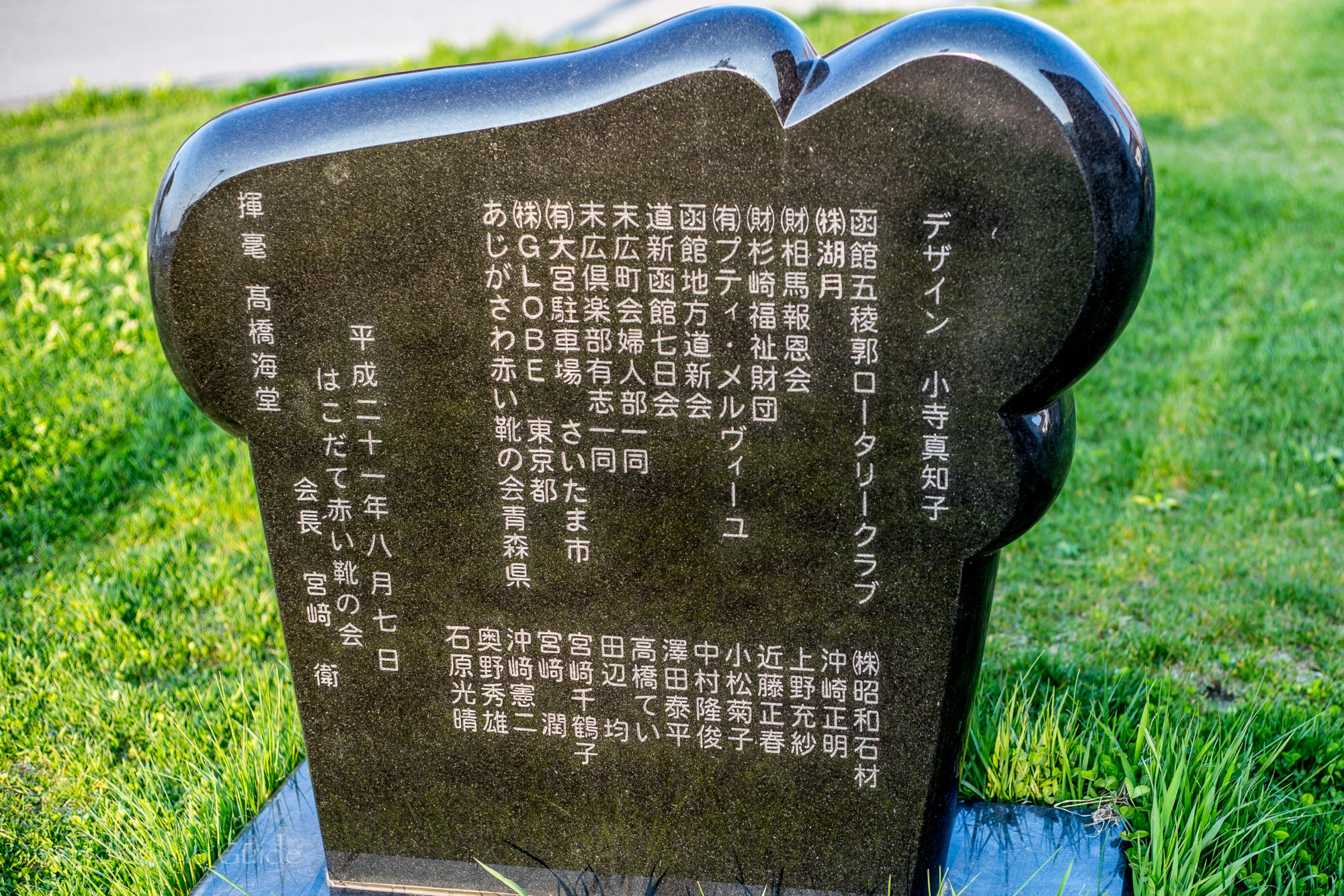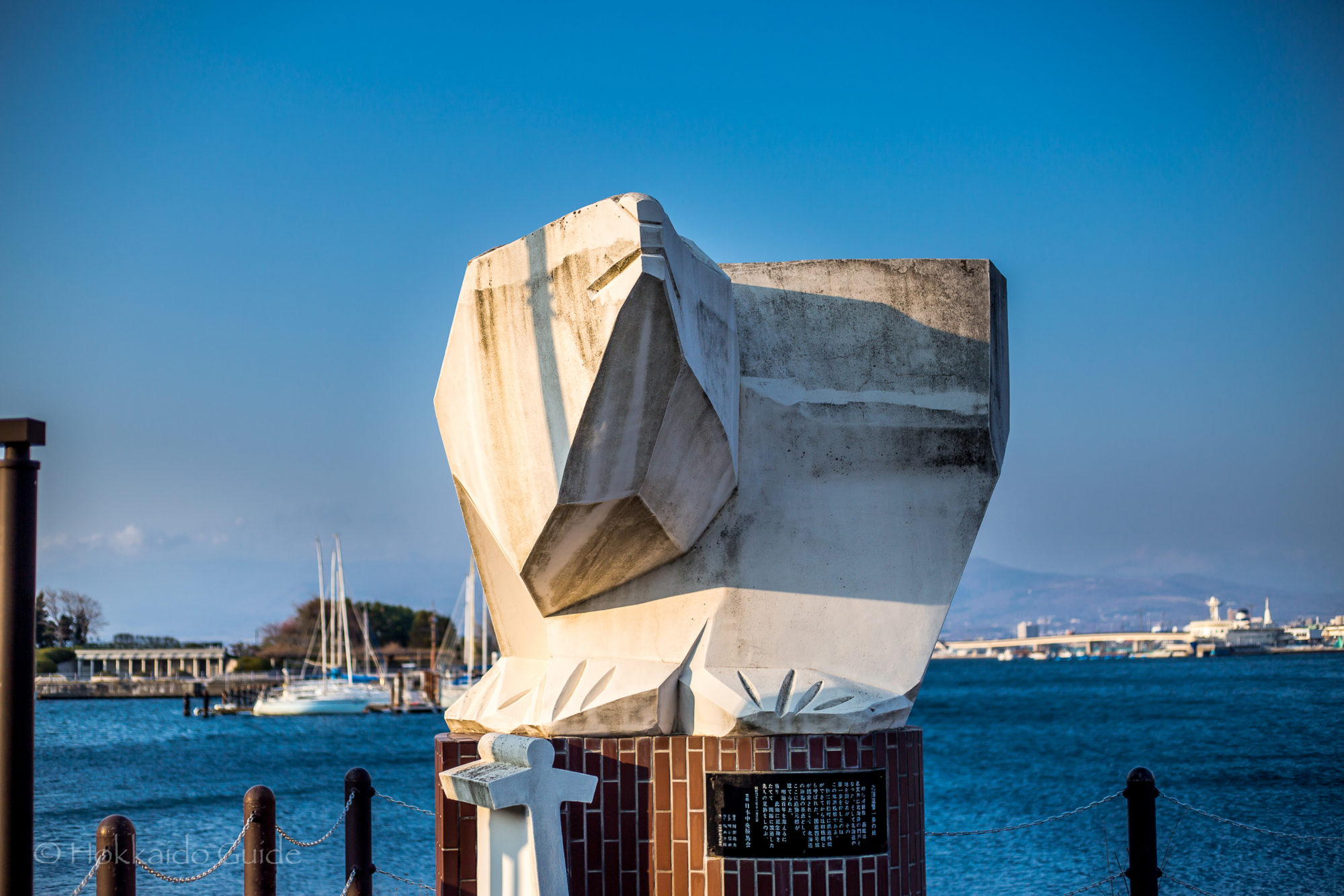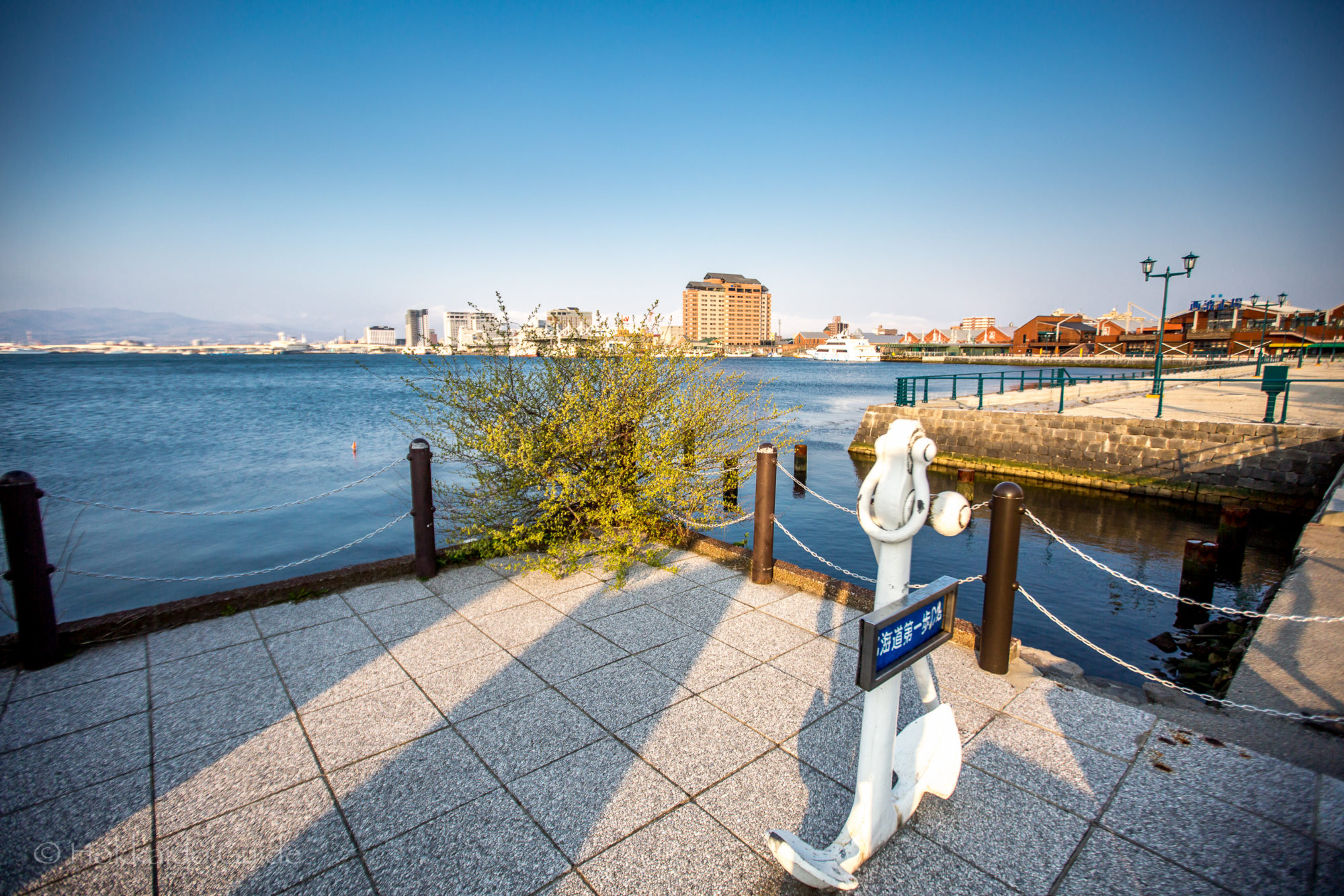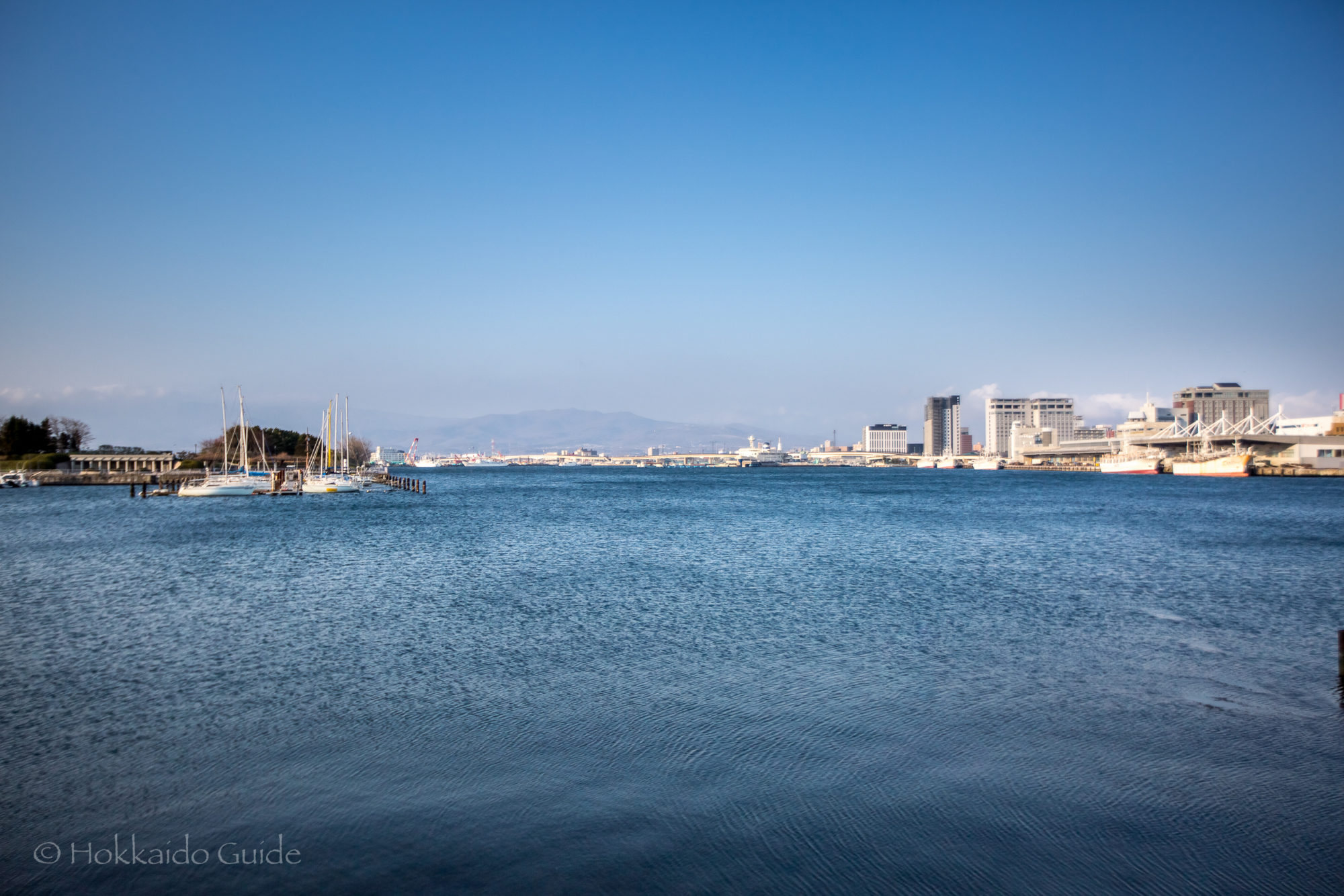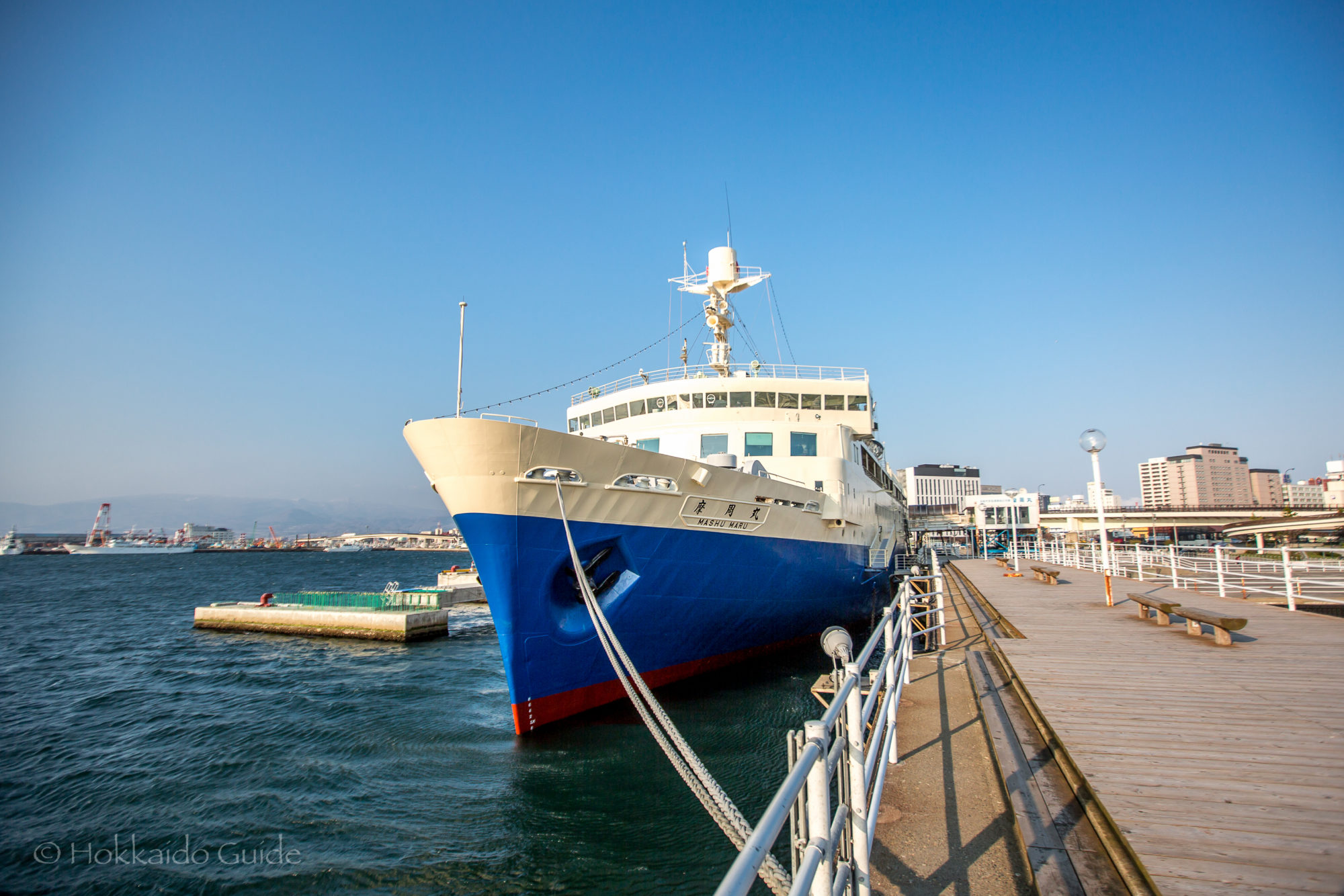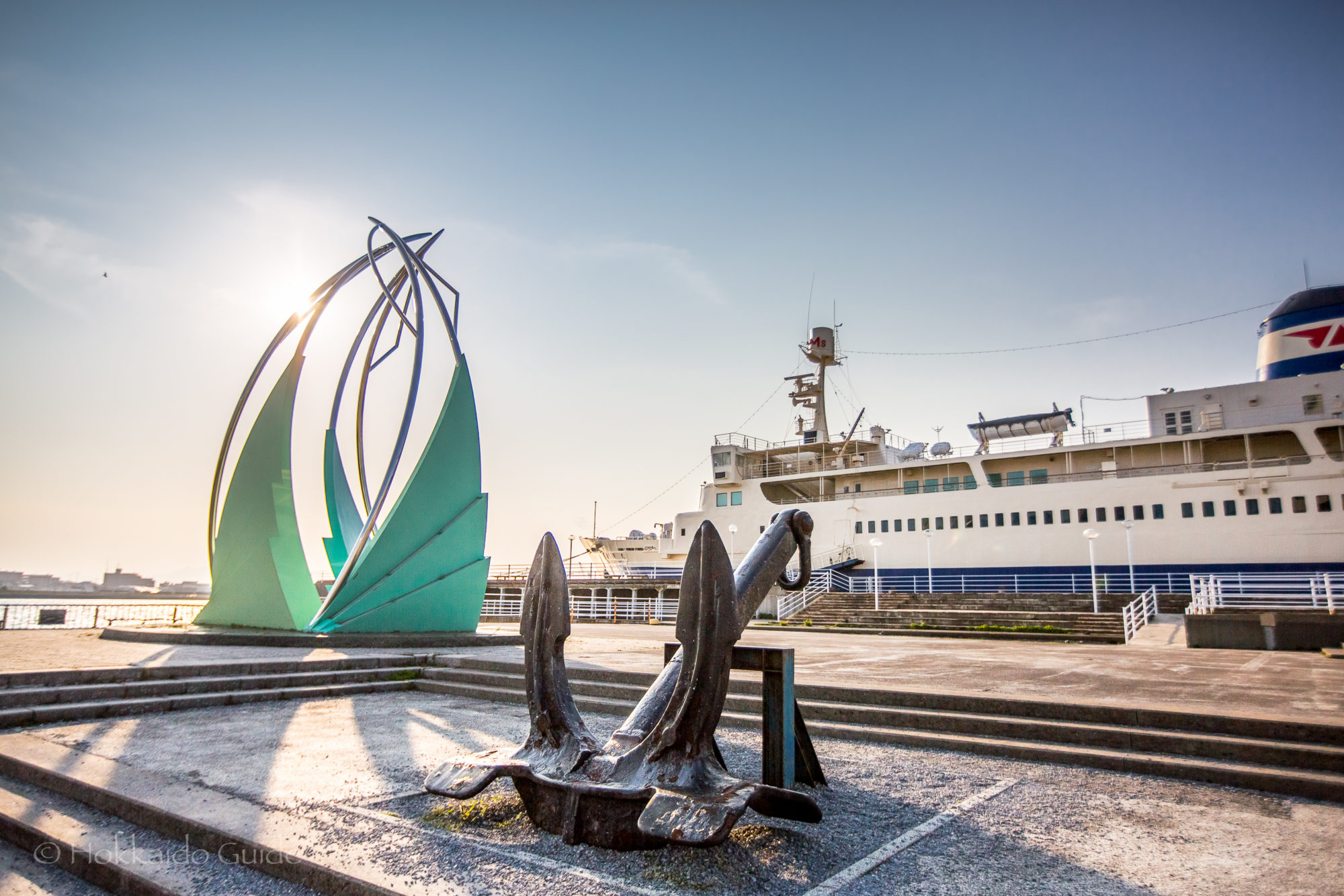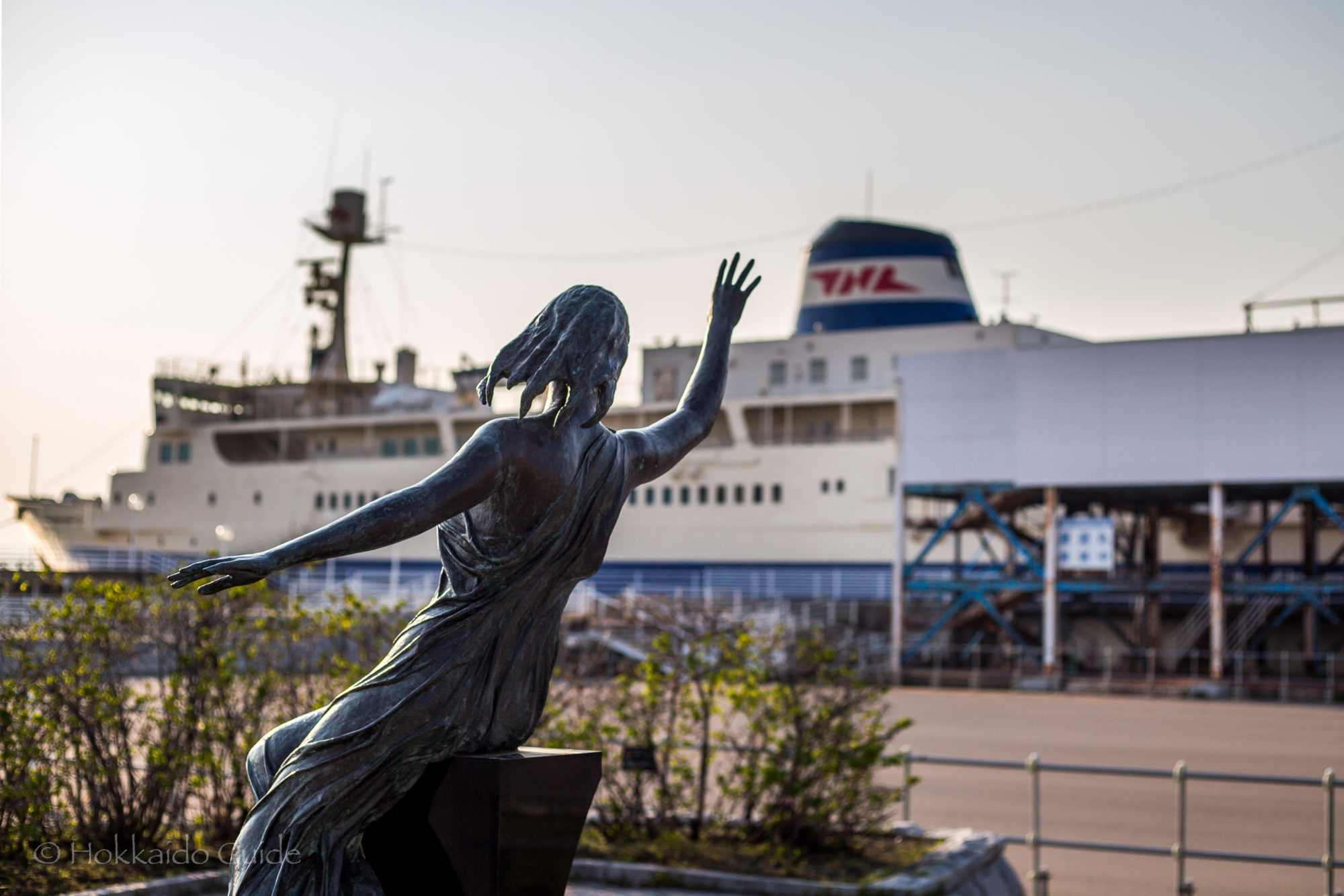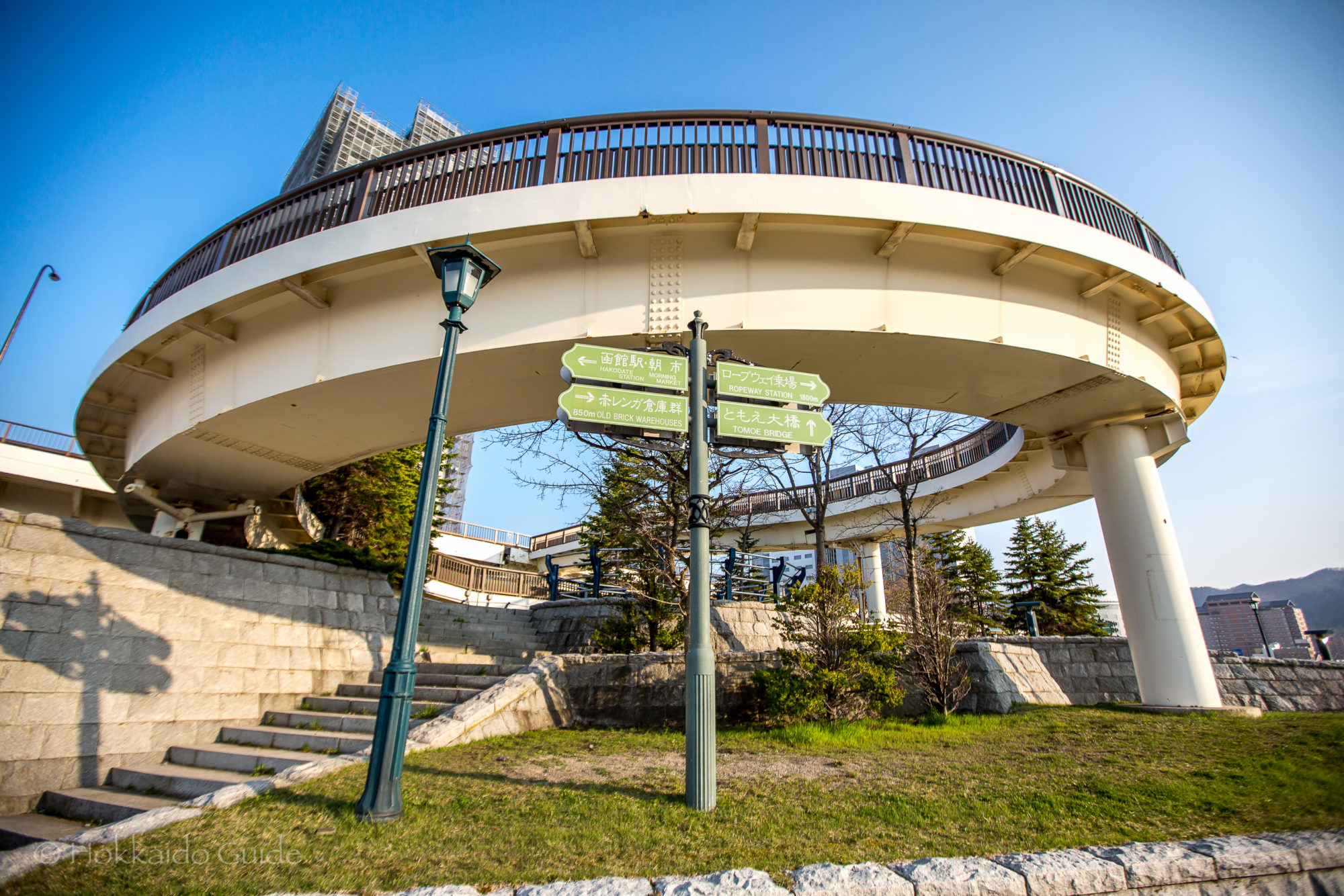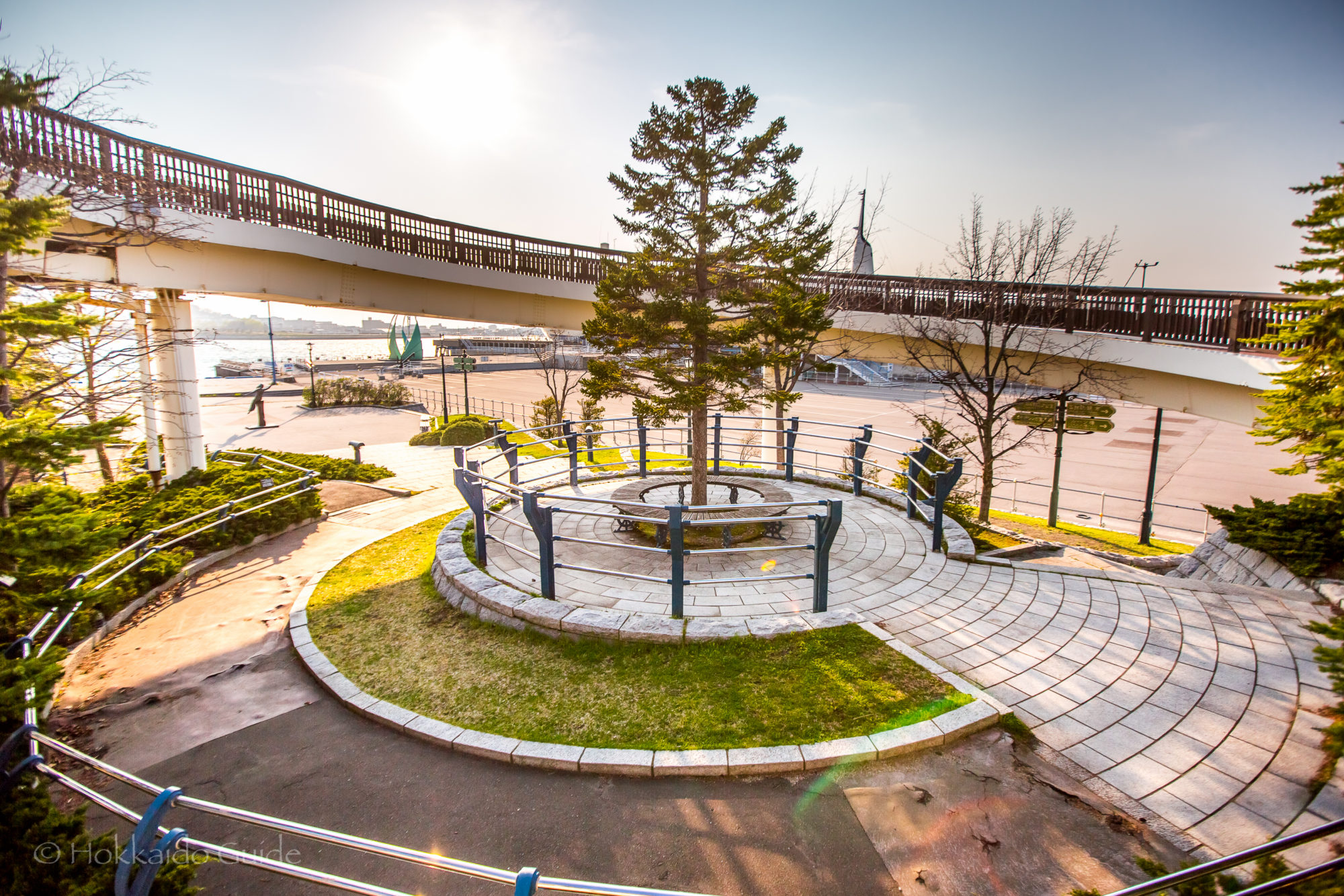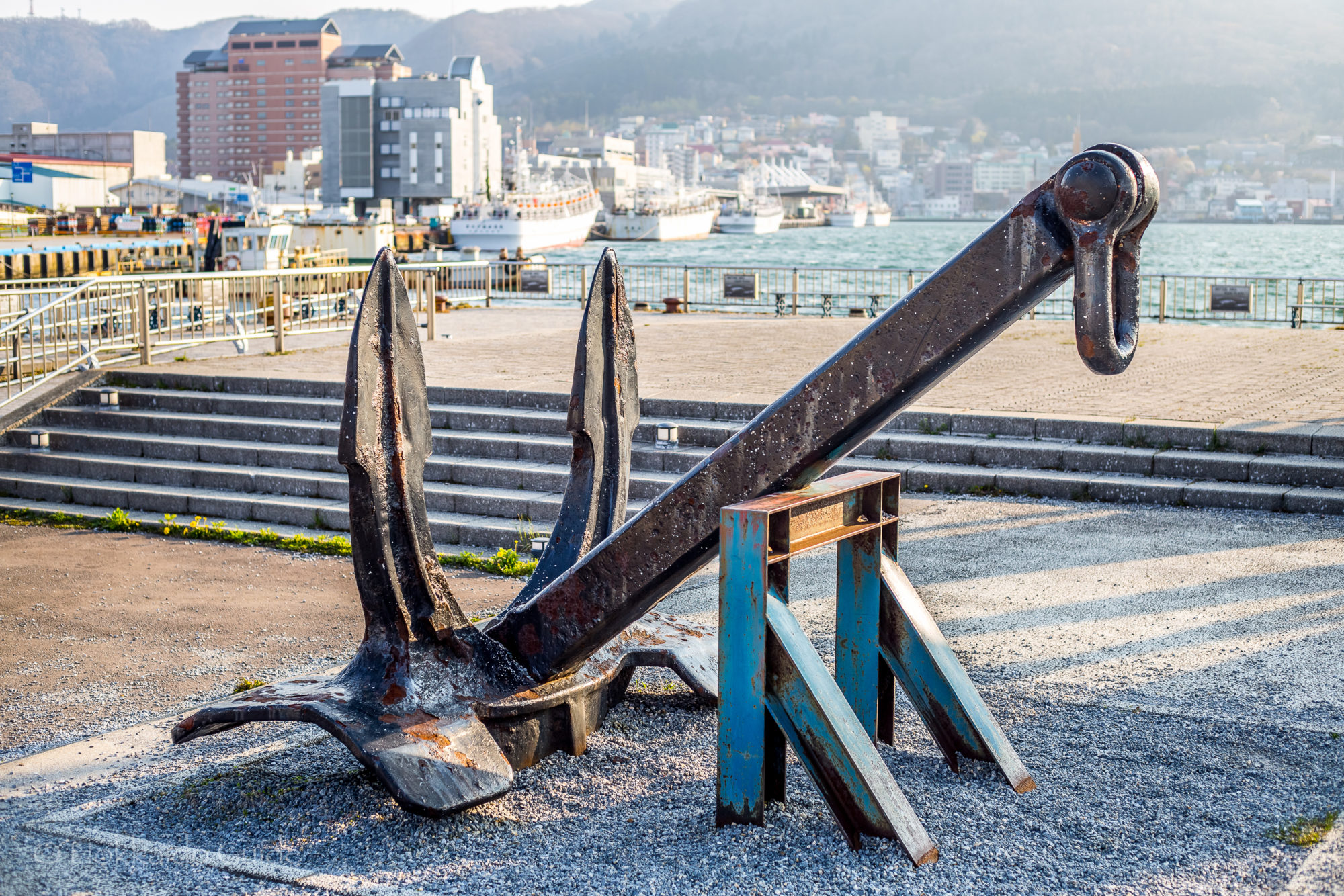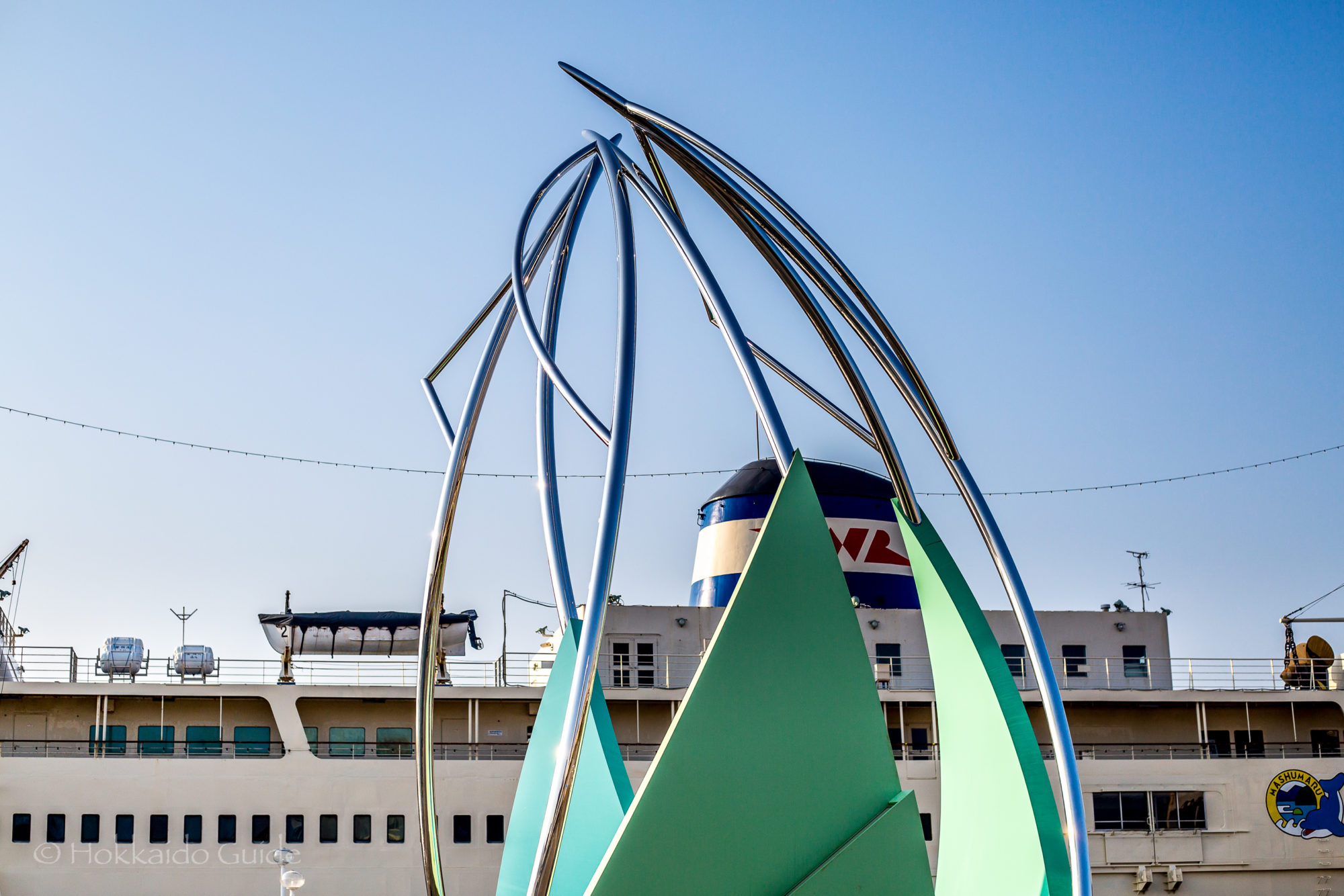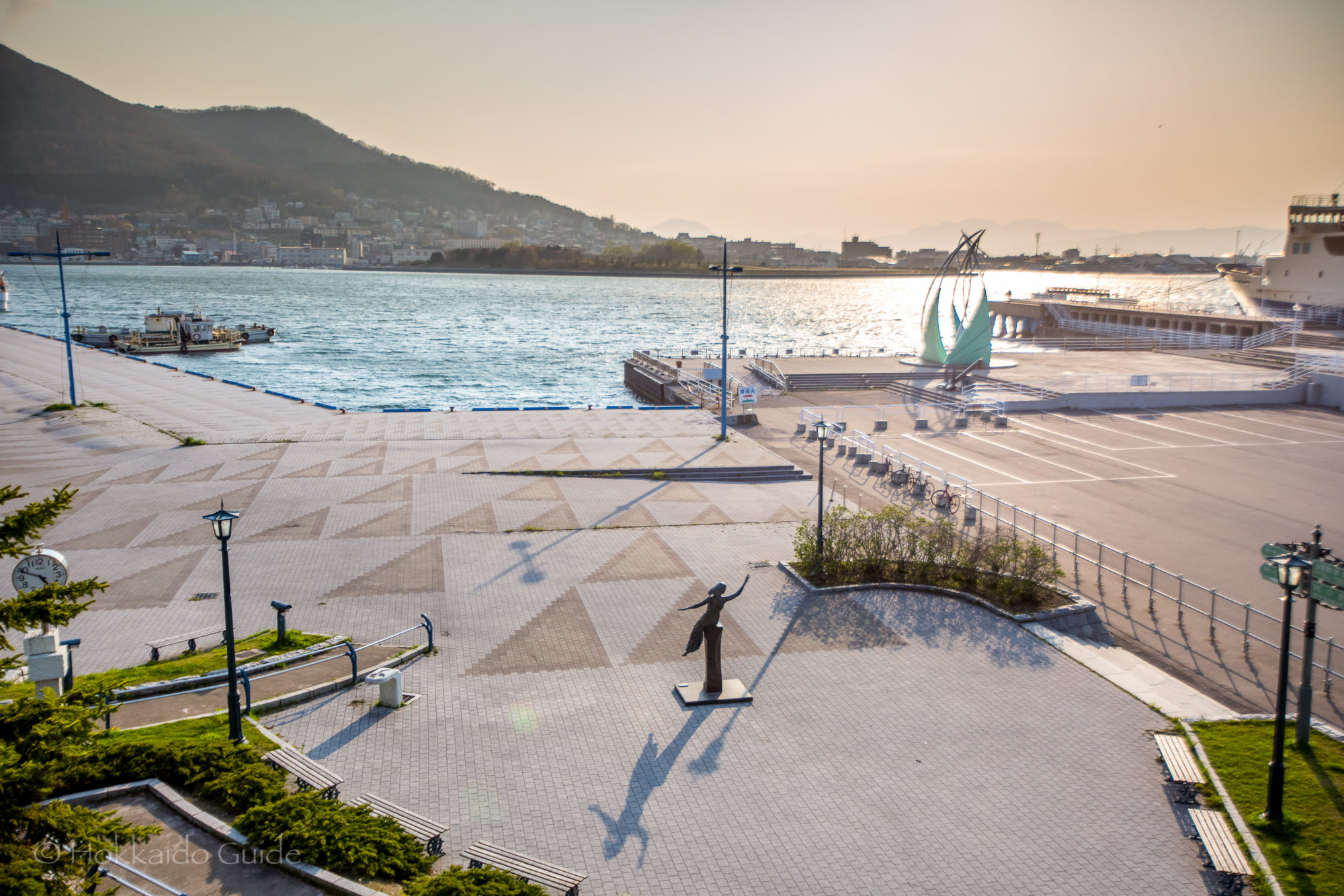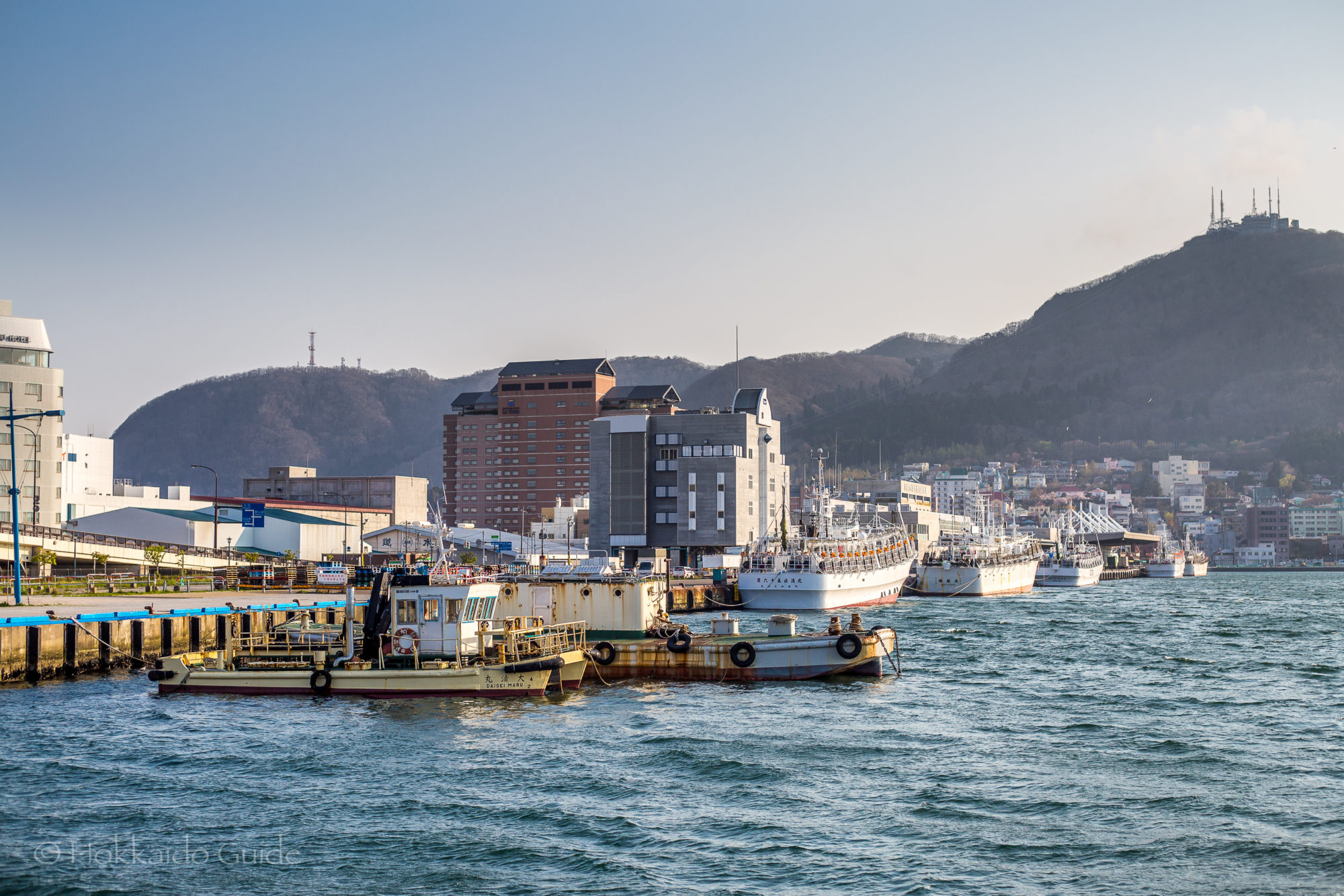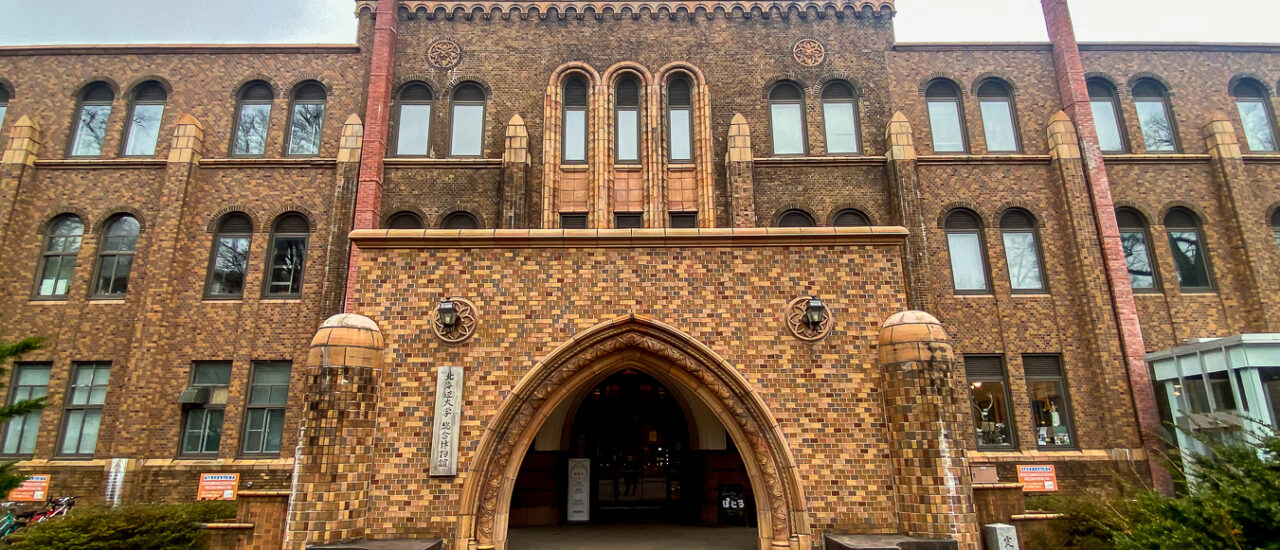
Category: Sightseeing
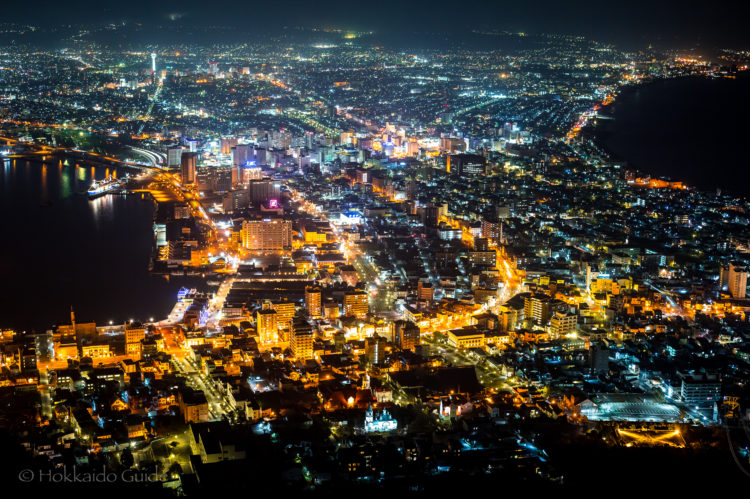
Mt. Hakodate

| Admission | Free to walk or drive up |
| Admission for ropeway | ¥1500 adult round trip ¥700 children/students round trip |
| Opening Hours | Ropeway 10:00 - 22:00 Operates every 15 minutes from 10:00 to 22:00 (until 21:00 from mid October to late April). |
| Closed | - |
| Contact | 013-823-3105 Ropeway 013-827-3127 Restaurant |
| Notes | Sightseeing spot, stunning night views, parking, wheelchair access, restaurant, souvenir store, take out store |
| Location / Getting There | The ropeway station is a 10 minute walk from Jujigai tram stop (5 minutes, ¥210 from Hakodate Station). By direct bus. From late April to mid November, there are multiple direct buses per hour between Hakodate Station and the summit of Mount Hakodate in the evenings (30 minutes, ¥400). The buses are covered by the day passes for trams and buses. By car. The toll-free road to the summit of Mount Hakodate is open from mid April to mid November. The road is closed to individual car traffic in the evenings between 17:00 and 22:00. |
 Mt. Hakodate is one of the main attractions of the city of Hakodate. The mountain is a prominent feature overlooking the city and stands at 334 metres. It can be found on the southern headland and it is most famous for its stunning night views. It has been voted as one of the top three night viewing spots in the whole of Japan! While visiting Hakodate it is a must see during any season. At the top, besides the views, there is a restaurant, observatory, rest area, souvenir store, and tea store.
Mt. Hakodate is one of the main attractions of the city of Hakodate. The mountain is a prominent feature overlooking the city and stands at 334 metres. It can be found on the southern headland and it is most famous for its stunning night views. It has been voted as one of the top three night viewing spots in the whole of Japan! While visiting Hakodate it is a must see during any season. At the top, besides the views, there is a restaurant, observatory, rest area, souvenir store, and tea store.
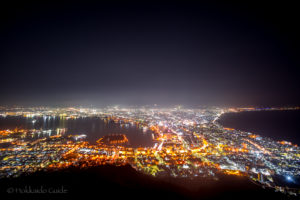 There are three ways to get to the top. The most popular mode of transport is the use of the gondola (it is the most used gondola in all of Japan!). The ropeway station has parking at the bottom and operates all year round. The gondola offers great views on the way up. There is parking at the summit, and a winding road to drive up for those with their own transport but this road is closed during winter once the snow arrives. For those more adventurous and fitter , there are walking trails to the top (it takes about 40 minutes to the top). You can hike to the top throughout the year. Anyway you get to the top, the views and facilities make this a must see in Hakodate!
There are three ways to get to the top. The most popular mode of transport is the use of the gondola (it is the most used gondola in all of Japan!). The ropeway station has parking at the bottom and operates all year round. The gondola offers great views on the way up. There is parking at the summit, and a winding road to drive up for those with their own transport but this road is closed during winter once the snow arrives. For those more adventurous and fitter , there are walking trails to the top (it takes about 40 minutes to the top). You can hike to the top throughout the year. Anyway you get to the top, the views and facilities make this a must see in Hakodate!

Kanemori Red Brick Warehouse
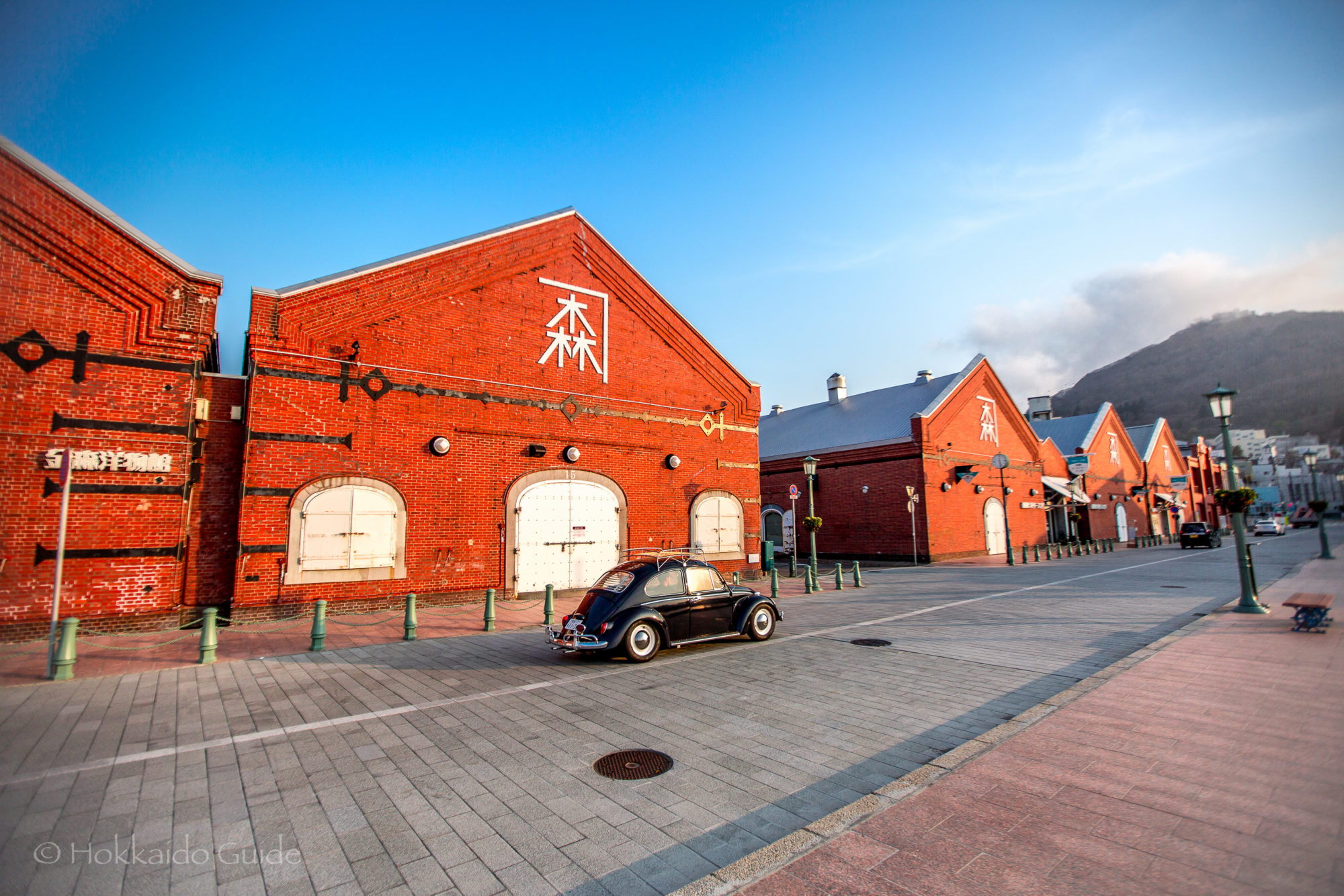
| Opening Hours | 9:30 - 18:00 |
| Closed | - |
| Contact | 0138-27-5530 |
| Notes | Shopping complex, historical site, free Wifi, wheelchair access & rental, no smoking, tax free shopping, rental bicycles, lockers, baby stroller rental, breast feeding room, pay phone, no pets, no outside food, currency exchange machine, parking available at ¥400 an hour |
| Location / Getting There | It's only a 2 minute walk from Suehirocho station. It's also an 18 minute walk from Hakodate station. It's right by the old red brick warehouses shopping district. 14-12 Suehirocho, Hakodate, Hokkaido 040-0053 |
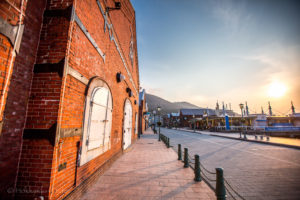 Sitting on the old Hakodate pier, the Kanemori Red Brick Warehouse is a commercial shopping area. Kumashiro Watanabe founded the first warehouse business in Hakodate, which lead to the current site. Constructed in 1909, it consists of four large facilities. Hakodate Port opened up to international trading. The Kanemori Red Brick Warehouse, over its history, has seen countless people and cultures trade within its walls. The area has changed very little. This area is a great spot to walk around and enjoy the history of the place.
Sitting on the old Hakodate pier, the Kanemori Red Brick Warehouse is a commercial shopping area. Kumashiro Watanabe founded the first warehouse business in Hakodate, which lead to the current site. Constructed in 1909, it consists of four large facilities. Hakodate Port opened up to international trading. The Kanemori Red Brick Warehouse, over its history, has seen countless people and cultures trade within its walls. The area has changed very little. This area is a great spot to walk around and enjoy the history of the place.
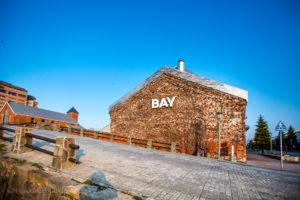 The Red Brick Warehouses are divided into four areas. Bay Hakodate, Kamemori Yobutsukan, Hakodate History Plaza, and Kanemori Hall. Bay Hakodate includes numerous stores, such as souvenir shops, boutiques, tax free stores, art and craft stores like Malaika, restaurants and cafes, plus a wine museum. Kamemori Yobutsukan, as with Bay Hakodate, has an array of twenty four stores including boutiques, interior stores, arts and crafts. Hakodate Plaza has fewer shops, but has a large beer hall with a couple of other stores, and the last warehouse is the Kanemori Hall. The hall is a concert hall that has regular shows on. Points of interest around the warehouse include the Girl in the Red Shoes, and the First Place of Entering Hokkaido.
The Red Brick Warehouses are divided into four areas. Bay Hakodate, Kamemori Yobutsukan, Hakodate History Plaza, and Kanemori Hall. Bay Hakodate includes numerous stores, such as souvenir shops, boutiques, tax free stores, art and craft stores like Malaika, restaurants and cafes, plus a wine museum. Kamemori Yobutsukan, as with Bay Hakodate, has an array of twenty four stores including boutiques, interior stores, arts and crafts. Hakodate Plaza has fewer shops, but has a large beer hall with a couple of other stores, and the last warehouse is the Kanemori Hall. The hall is a concert hall that has regular shows on. Points of interest around the warehouse include the Girl in the Red Shoes, and the First Place of Entering Hokkaido.
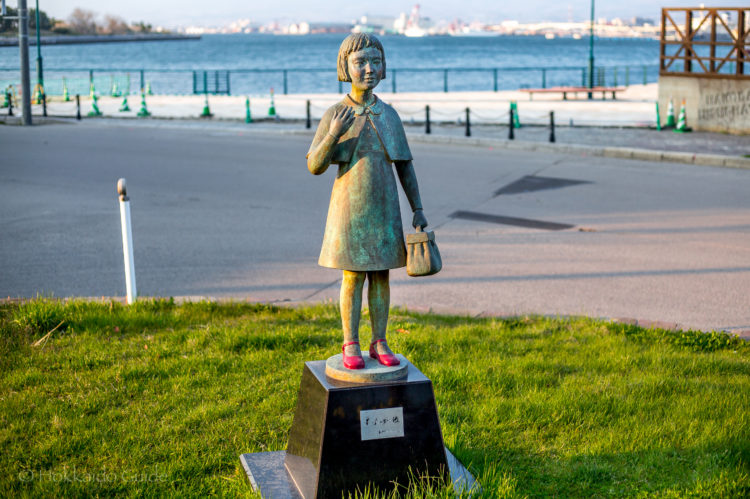
Girl in the Red Shoes
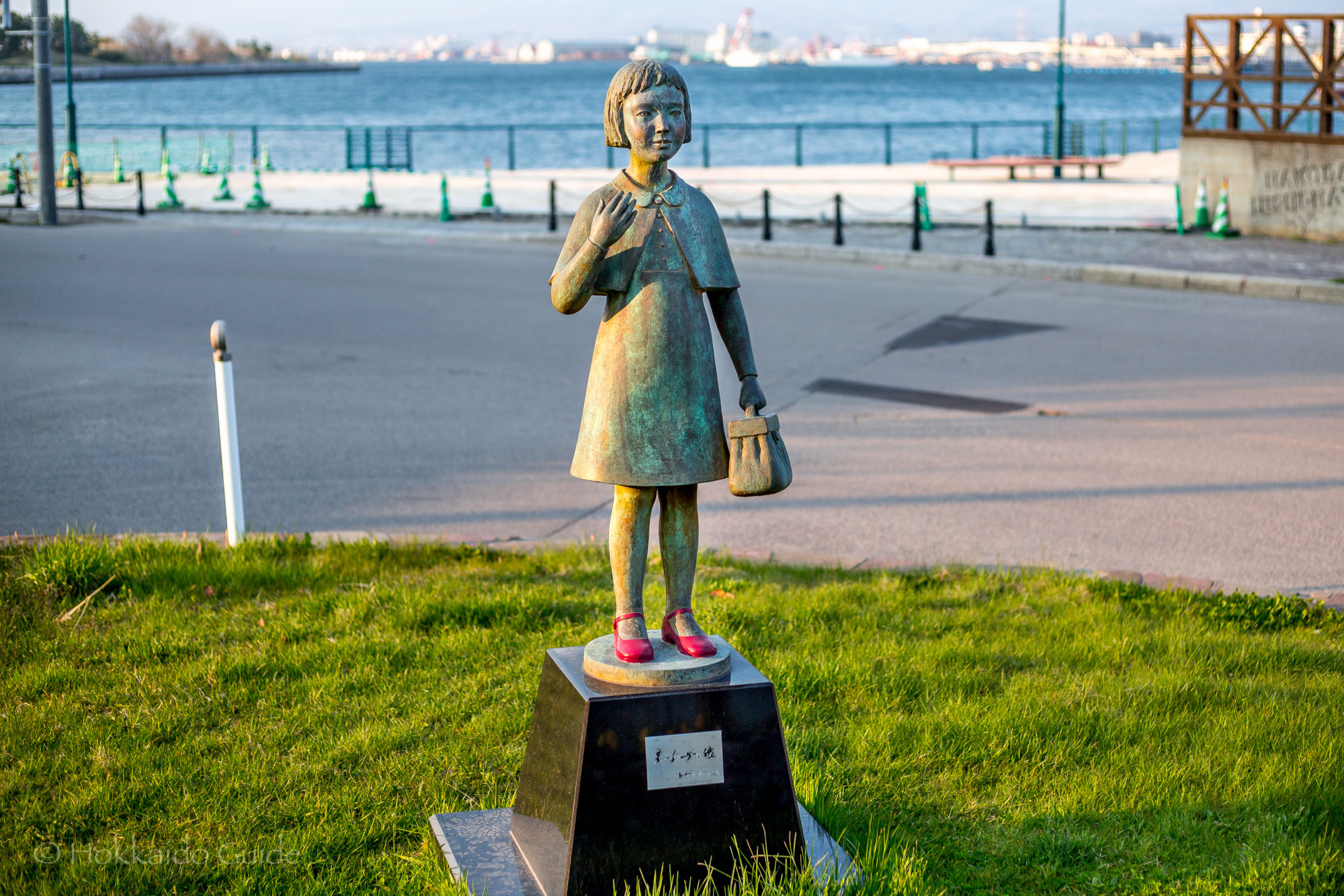
| Admission | Free |
| Opening Hours | Open 24 hours |
| Closed | - |
| Contact | 011-3826-3753 |
| Notes | Sightseeing spot, historical landmark, walking spot, no parking (paid parking nearby) |
| Location / Getting There | It's only a 2 minute walk from Suehirocho station. It's also an 18 minute walk from Hakodate station. It's right by the old red brick warehouses shopping district. 23 Suehirocho, Hakodate, Hokkaido 040-0053 |
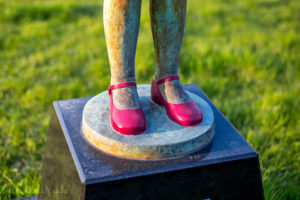 The statue of the girl on the red shoes has a sad and fascinating background. The actual origins can be traced back to a poem ‘Akai Kutsu’ (which translates to red shoes), written in 1922 by Ujō Noguchi. The poem is about a young girl in red shoes taken to a foreign country by a foreigner. This short poem is based on the real life of Iwasaki Kimi (July 15, 1902 – September 15, 1911), though there has been disagreement on the accuracy of this story. The story is of Kimi, and her mother, Kayo moving to Hokkaido (hence the three statues in the prefecture), to start a new life with Kayo’s new husband.
The statue of the girl on the red shoes has a sad and fascinating background. The actual origins can be traced back to a poem ‘Akai Kutsu’ (which translates to red shoes), written in 1922 by Ujō Noguchi. The poem is about a young girl in red shoes taken to a foreign country by a foreigner. This short poem is based on the real life of Iwasaki Kimi (July 15, 1902 – September 15, 1911), though there has been disagreement on the accuracy of this story. The story is of Kimi, and her mother, Kayo moving to Hokkaido (hence the three statues in the prefecture), to start a new life with Kayo’s new husband.
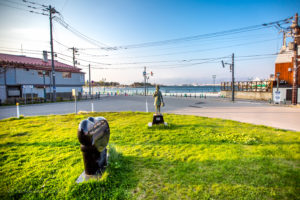 Living on a farm and due to the harsh living conditions Kayo entrusted Kimi’s upbringing to a pair of married American missionaries by the name of Hewitt. The missionaries planned to return to America and bring Kimi with them. Unfortunately, the tale takes a sad turn, as Kimi died of tuberculosis before going away at the age of 9. Kayo, not seeing her daughter again, spent her life believing Kimi had gone to America with the Hewitts. There are six statues throughout Japan, with three in Hokkaido, one in Hakodate, Otaru, and in Rusutsu.
Living on a farm and due to the harsh living conditions Kayo entrusted Kimi’s upbringing to a pair of married American missionaries by the name of Hewitt. The missionaries planned to return to America and bring Kimi with them. Unfortunately, the tale takes a sad turn, as Kimi died of tuberculosis before going away at the age of 9. Kayo, not seeing her daughter again, spent her life believing Kimi had gone to America with the Hewitts. There are six statues throughout Japan, with three in Hokkaido, one in Hakodate, Otaru, and in Rusutsu.
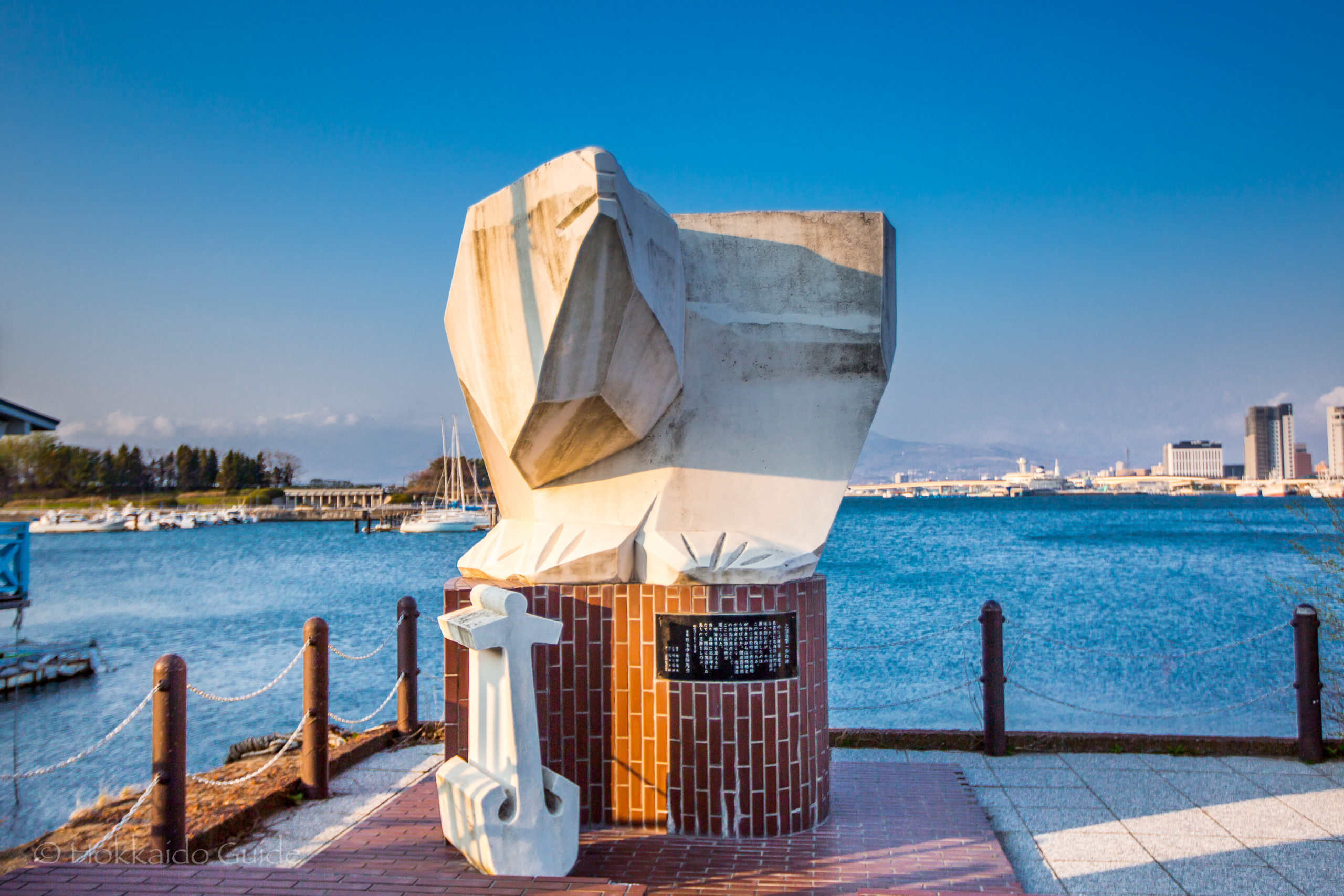
First Place of Entering Hokkaido
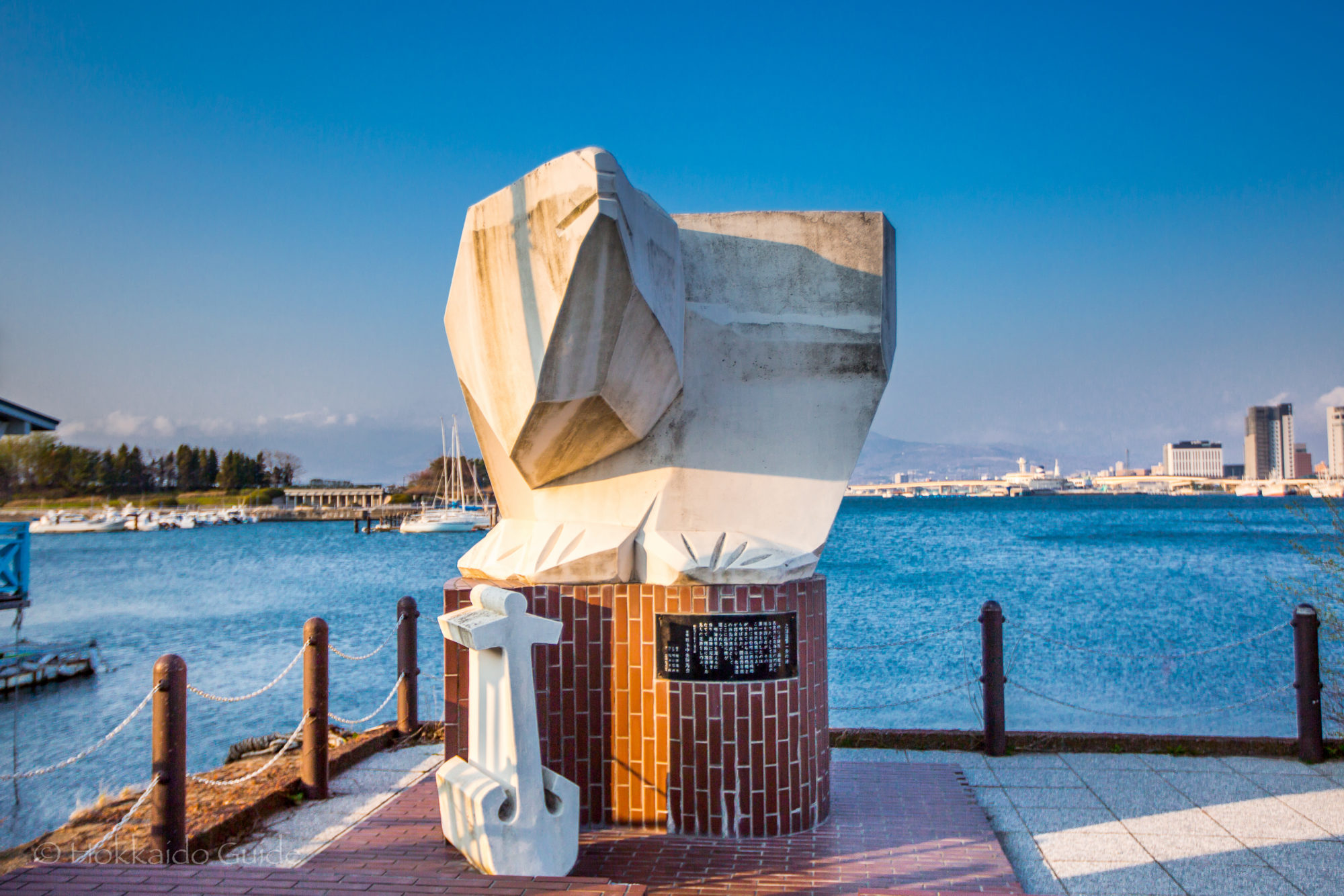
| Admission | Free |
| Opening Hours | Open 24 hours |
| Closed | - |
| Contact | 0138-23-5440 |
| Notes | Sightseeing spot, historical landmark, walking spot, no parking (paid parking nearby) |
| Location / Getting There | The monument is located on the old pier of Hakodate. It's only a 2 minute walk from Suehirocho station. It's also an 18 minute walk from Hakodate station. It's right by the old red brick warehouses shopping district. 24 Suehirocho, Hakodate, Hokkaido 040-0053 |
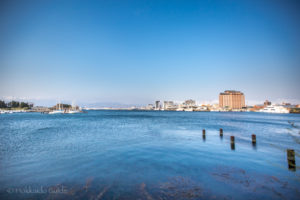 Since the Meiji era, the Higashihama Pier (the former pier) was the gateway to Hokkaido. This pier was the original landing site. In 1968 a monument was erected to commemorate the 100th anniversary of this landing. The monument also celebrates the achievements of the ancestors who came and cultivated Hokkaido. It is fascinating to go to that very spot and gaze over waters that brought in settlers from the mainland of Honshu. For those who like historical spots, take a quick walk down and enjoy the view.
Since the Meiji era, the Higashihama Pier (the former pier) was the gateway to Hokkaido. This pier was the original landing site. In 1968 a monument was erected to commemorate the 100th anniversary of this landing. The monument also celebrates the achievements of the ancestors who came and cultivated Hokkaido. It is fascinating to go to that very spot and gaze over waters that brought in settlers from the mainland of Honshu. For those who like historical spots, take a quick walk down and enjoy the view.
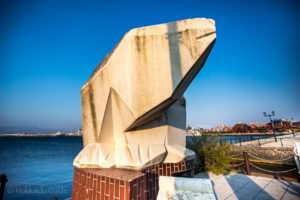 The design of the monument depicts a brown bear standing over an anchor. The bear and the anchor are common motifs seen around Hokkaido. The monument was designed by Nobumichi Akashi, who was a professor at Waseda University. The pier itself is a nice place to take a walk by the water. The landing spot is right past the Red Brick Warehouse shopping area (which is a great spot to visit), so it is easy to have a wander around and take in a bit of history.
The design of the monument depicts a brown bear standing over an anchor. The bear and the anchor are common motifs seen around Hokkaido. The monument was designed by Nobumichi Akashi, who was a professor at Waseda University. The pier itself is a nice place to take a walk by the water. The landing spot is right past the Red Brick Warehouse shopping area (which is a great spot to visit), so it is easy to have a wander around and take in a bit of history. 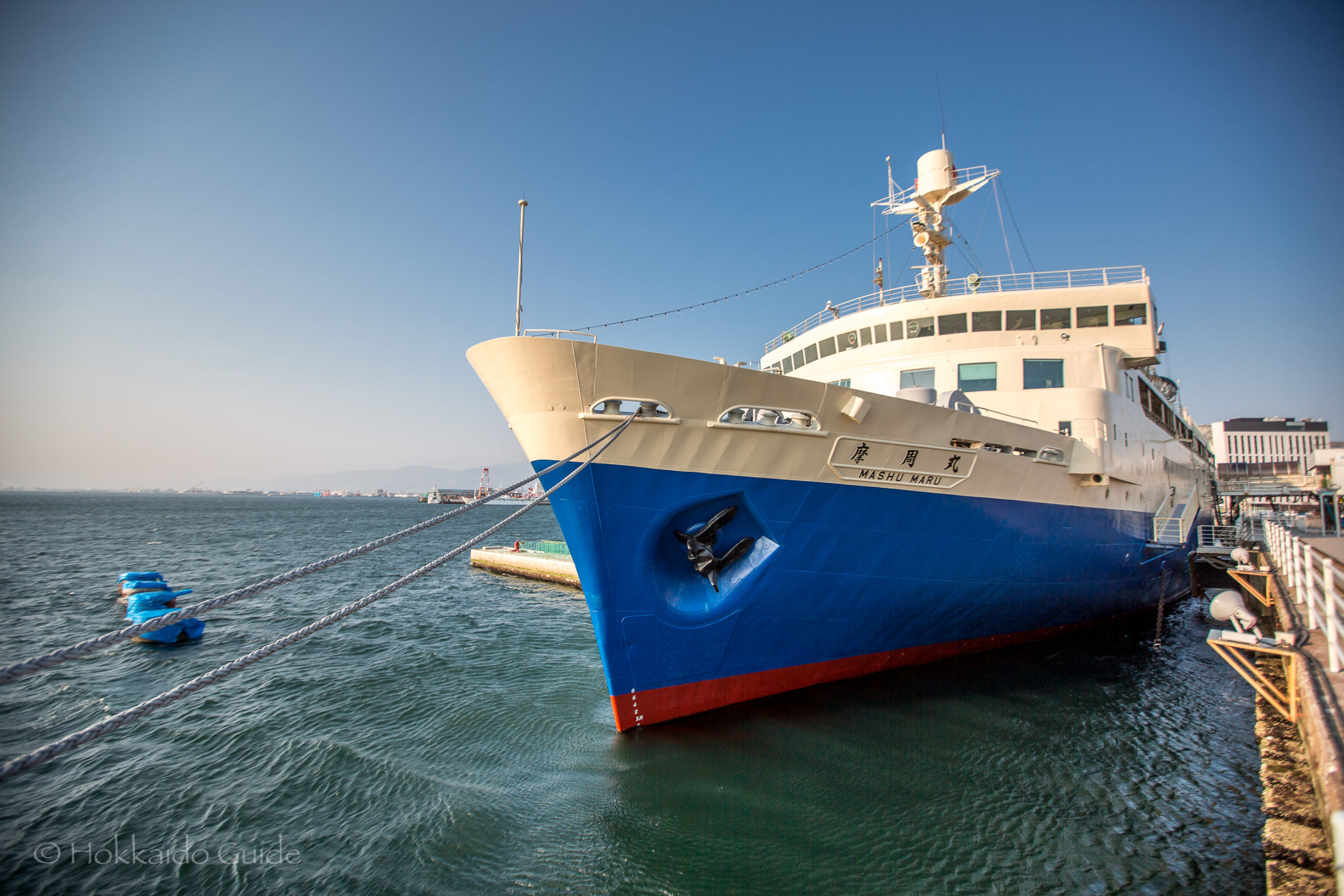
Museum Ship Mashu Maru
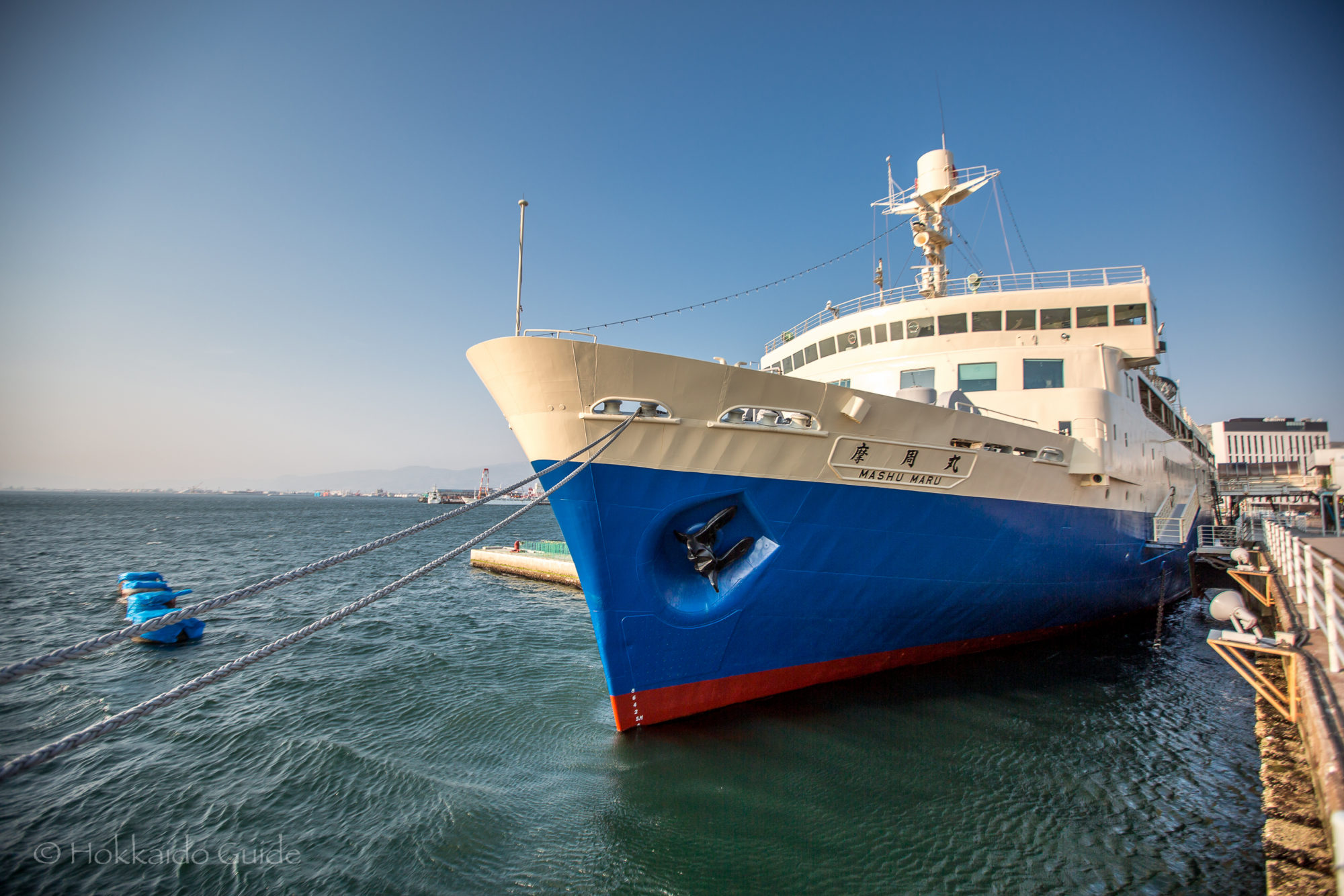
| Admission | ¥500 Adults ¥250 Children |
| Opening Hours | 8:30 - 18:00 (admission until 17:00) April-October 9:00 - 17:00 (admission until 16:00) November-March: 10:00 - 15: 00 December 31st-January 3rd |
| Closed | - |
| Contact | 013-827-2500 info@mashumaru.com http://mashumaru.com |
| Notes | Museum, guided tours available, no parking (though Hakodate Station Square Parking can be used), restrooms |
| Location / Getting There | Located on the western harbor in Hakodate on the old pier. It's only a 4 minute walk from Hakodate station. It's also a 10 minute walk from the Red Brick Warehouses 29-15 Goryokakucho, Hakodate, Hokkaido 040-0001 |
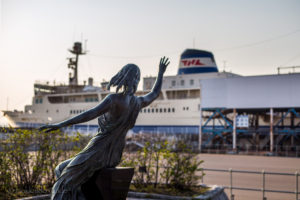 The Mashu Maru is a ship that once served as a ferry and was the link between Hokkaido and the main island of Honshu. This ferry was in service until its last day on March 13, 1988. It is now moored at the old Hakodate number 2 quay. This platform was the actual platform from which the Mashu Maru operated from. In what is an already historical city, it now serves as a museum adding to the history, and sees its days welcoming sightseers. Close by to the ferry you can find Ika Square and Seaport Park, which is not a bad spot to have some take away lunch!
The Mashu Maru is a ship that once served as a ferry and was the link between Hokkaido and the main island of Honshu. This ferry was in service until its last day on March 13, 1988. It is now moored at the old Hakodate number 2 quay. This platform was the actual platform from which the Mashu Maru operated from. In what is an already historical city, it now serves as a museum adding to the history, and sees its days welcoming sightseers. Close by to the ferry you can find Ika Square and Seaport Park, which is not a bad spot to have some take away lunch!
 Once on board the Mashu Maru (kind of pronounced like marshmallow) you can access various parts of the ship. Take a turn at the wheel at the wheelhouse, or have a look at the wireless communication room as it was back in the day. One of the front cabins was remodeled into an exhibition room and has models and parts from the ferry. There is also a history of the ferry with panels and images. Unfortunately, there is no access to the main engine room or overall control room though you can see these rooms via a monitor camera that you can control. Access to the deck is available, though in the event of strong winds or snow parts of the deck will closed to the public. On board you can find a small shop selling souvenirs. Enjoy!
Once on board the Mashu Maru (kind of pronounced like marshmallow) you can access various parts of the ship. Take a turn at the wheel at the wheelhouse, or have a look at the wireless communication room as it was back in the day. One of the front cabins was remodeled into an exhibition room and has models and parts from the ferry. There is also a history of the ferry with panels and images. Unfortunately, there is no access to the main engine room or overall control room though you can see these rooms via a monitor camera that you can control. Access to the deck is available, though in the event of strong winds or snow parts of the deck will closed to the public. On board you can find a small shop selling souvenirs. Enjoy!

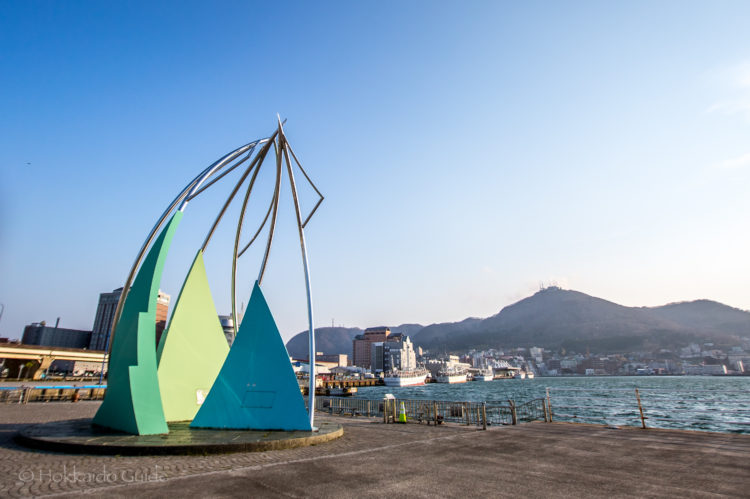
Ika Square & Seaport Park

| Admission | Free |
| Opening Hours | Open 24 hours |
| Closed | - |
| Contact | - |
| Notes | Sightseeing spot, walking spot |
| Location / Getting There | The park and square are located on the eastern harbor, on the pier of Hakodate. It's only a 4 minute walk from Hakodate station. It's also a 10 minute walk from the Red Brick Warehouses 22-22 Otemachi, Hakodate, Hokkaido 040-0064 |
 Hakodate is a coastal city. There are many piers and waterside promenades to casually stroll along and enjoy the views. On the western harbor you can find a nice small park appropriately named Seaport Park, plus Ika Square. The park is accessed via a circular walkway that surrounds the park and leads on to the well known Tomoe Big Bridge. The park has some small seating areas, has a view of the water, and views down onto Ika Square and the plaza there. This plaza is where tourists can access the decommissioned ship turned museum, the Mashu Maru.
Hakodate is a coastal city. There are many piers and waterside promenades to casually stroll along and enjoy the views. On the western harbor you can find a nice small park appropriately named Seaport Park, plus Ika Square. The park is accessed via a circular walkway that surrounds the park and leads on to the well known Tomoe Big Bridge. The park has some small seating areas, has a view of the water, and views down onto Ika Square and the plaza there. This plaza is where tourists can access the decommissioned ship turned museum, the Mashu Maru.
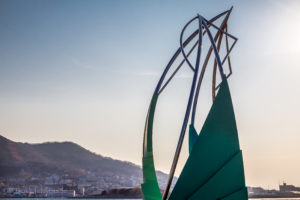 Hakodate has a long and thriving squid fishing industry. It is one of the most popular seafood in Hakodate for the locals. In 1989 the city of Hakodate designated the squid as the city’s official fish. Squid is called ‘Ika’ in Japanese. Ika Square was created in honor of this event. The large monument located at the centre of the square represents a swarming school of squid. There are other statues in the plaza including an old anchor plus a young girl waving off departing ships from the port.
Hakodate has a long and thriving squid fishing industry. It is one of the most popular seafood in Hakodate for the locals. In 1989 the city of Hakodate designated the squid as the city’s official fish. Squid is called ‘Ika’ in Japanese. Ika Square was created in honor of this event. The large monument located at the centre of the square represents a swarming school of squid. There are other statues in the plaza including an old anchor plus a young girl waving off departing ships from the port.

